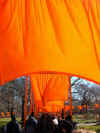
|
New York Architecture Images- Central Park Christo's Gates |
||||||||||||||||||||||||||||||||||||||||||||||||||||||||||||||||||||||||||||||||||||||||||||||||||||||||||||||||||||||||||||||||||||||||||||||||||||||||||||||||||||||||||||||||||||||||||||||||||||||||||||||||||||||||||||||||||||||||||||||||||||||||||||||||||||||||||||||||||||||||||||||||||||||||||||||||||||||||||||||||||||||||||||||||||||||||||||||||||||||||||||||||||||||||||||||||||||||||||||||||||||||||||||||||||||||||||||||||||||||||||||||||||||||||||||||||||||||||||||||||||||||||||||||||||||||||||||||||||||||||||||||||||||||||||||||||||||||||||||||||||||||||||||||||||||||||||||||||||||||||||||||||||||||||||||||||||||||||||||||||||||||||||||||||||||||||||||||||||||||||||||||||||||||||||||||||||||||||||||||||||||||||||||||||||||||||||||||||||||||||||||||||||||||||||||||||||||||||||||||||||||||||||||||||||||||||||||||||||||||||||||||||||||||||||||||||||||||||||||||||||||||||||||||||||||||||||||||||||||||||||||||||||||||||||||||||||||||||||||||||||||||||||||||||||||||||||||||||||||||
|
artists |
Christo and Jean-Claude | ||||||||||||||||||||||||||||||||||||||||||||||||||||||||||||||||||||||||||||||||||||||||||||||||||||||||||||||||||||||||||||||||||||||||||||||||||||||||||||||||||||||||||||||||||||||||||||||||||||||||||||||||||||||||||||||||||||||||||||||||||||||||||||||||||||||||||||||||||||||||||||||||||||||||||||||||||||||||||||||||||||||||||||||||||||||||||||||||||||||||||||||||||||||||||||||||||||||||||||||||||||||||||||||||||||||||||||||||||||||||||||||||||||||||||||||||||||||||||||||||||||||||||||||||||||||||||||||||||||||||||||||||||||||||||||||||||||||||||||||||||||||||||||||||||||||||||||||||||||||||||||||||||||||||||||||||||||||||||||||||||||||||||||||||||||||||||||||||||||||||||||||||||||||||||||||||||||||||||||||||||||||||||||||||||||||||||||||||||||||||||||||||||||||||||||||||||||||||||||||||||||||||||||||||||||||||||||||||||||||||||||||||||||||||||||||||||||||||||||||||||||||||||||||||||||||||||||||||||||||||||||||||||||||||||||||||||||||||||||||||||||||||||||||||||||||||||||||||||||||
|
location |
Central Park | ||||||||||||||||||||||||||||||||||||||||||||||||||||||||||||||||||||||||||||||||||||||||||||||||||||||||||||||||||||||||||||||||||||||||||||||||||||||||||||||||||||||||||||||||||||||||||||||||||||||||||||||||||||||||||||||||||||||||||||||||||||||||||||||||||||||||||||||||||||||||||||||||||||||||||||||||||||||||||||||||||||||||||||||||||||||||||||||||||||||||||||||||||||||||||||||||||||||||||||||||||||||||||||||||||||||||||||||||||||||||||||||||||||||||||||||||||||||||||||||||||||||||||||||||||||||||||||||||||||||||||||||||||||||||||||||||||||||||||||||||||||||||||||||||||||||||||||||||||||||||||||||||||||||||||||||||||||||||||||||||||||||||||||||||||||||||||||||||||||||||||||||||||||||||||||||||||||||||||||||||||||||||||||||||||||||||||||||||||||||||||||||||||||||||||||||||||||||||||||||||||||||||||||||||||||||||||||||||||||||||||||||||||||||||||||||||||||||||||||||||||||||||||||||||||||||||||||||||||||||||||||||||||||||||||||||||||||||||||||||||||||||||||||||||||||||||||||||||||||||
|
date |
February 2005 | ||||||||||||||||||||||||||||||||||||||||||||||||||||||||||||||||||||||||||||||||||||||||||||||||||||||||||||||||||||||||||||||||||||||||||||||||||||||||||||||||||||||||||||||||||||||||||||||||||||||||||||||||||||||||||||||||||||||||||||||||||||||||||||||||||||||||||||||||||||||||||||||||||||||||||||||||||||||||||||||||||||||||||||||||||||||||||||||||||||||||||||||||||||||||||||||||||||||||||||||||||||||||||||||||||||||||||||||||||||||||||||||||||||||||||||||||||||||||||||||||||||||||||||||||||||||||||||||||||||||||||||||||||||||||||||||||||||||||||||||||||||||||||||||||||||||||||||||||||||||||||||||||||||||||||||||||||||||||||||||||||||||||||||||||||||||||||||||||||||||||||||||||||||||||||||||||||||||||||||||||||||||||||||||||||||||||||||||||||||||||||||||||||||||||||||||||||||||||||||||||||||||||||||||||||||||||||||||||||||||||||||||||||||||||||||||||||||||||||||||||||||||||||||||||||||||||||||||||||||||||||||||||||||||||||||||||||||||||||||||||||||||||||||||||||||||||||||||||||||||
|
type |
Sculpture | ||||||||||||||||||||||||||||||||||||||||||||||||||||||||||||||||||||||||||||||||||||||||||||||||||||||||||||||||||||||||||||||||||||||||||||||||||||||||||||||||||||||||||||||||||||||||||||||||||||||||||||||||||||||||||||||||||||||||||||||||||||||||||||||||||||||||||||||||||||||||||||||||||||||||||||||||||||||||||||||||||||||||||||||||||||||||||||||||||||||||||||||||||||||||||||||||||||||||||||||||||||||||||||||||||||||||||||||||||||||||||||||||||||||||||||||||||||||||||||||||||||||||||||||||||||||||||||||||||||||||||||||||||||||||||||||||||||||||||||||||||||||||||||||||||||||||||||||||||||||||||||||||||||||||||||||||||||||||||||||||||||||||||||||||||||||||||||||||||||||||||||||||||||||||||||||||||||||||||||||||||||||||||||||||||||||||||||||||||||||||||||||||||||||||||||||||||||||||||||||||||||||||||||||||||||||||||||||||||||||||||||||||||||||||||||||||||||||||||||||||||||||||||||||||||||||||||||||||||||||||||||||||||||||||||||||||||||||||||||||||||||||||||||||||||||||||||||||||||||||
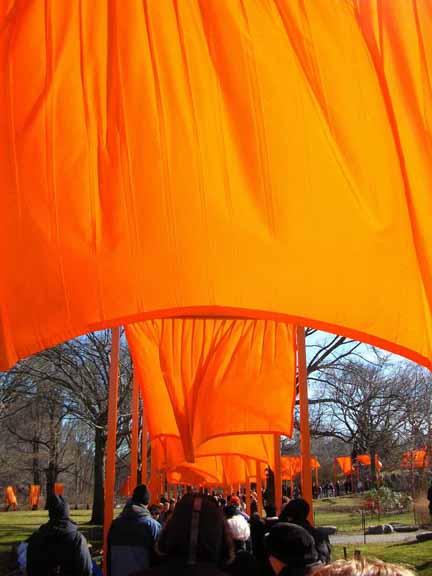
|
|||||||||||||||||||||||||||||||||||||||||||||||||||||||||||||||||||||||||||||||||||||||||||||||||||||||||||||||||||||||||||||||||||||||||||||||||||||||||||||||||||||||||||||||||||||||||||||||||||||||||||||||||||||||||||||||||||||||||||||||||||||||||||||||||||||||||||||||||||||||||||||||||||||||||||||||||||||||||||||||||||||||||||||||||||||||||||||||||||||||||||||||||||||||||||||||||||||||||||||||||||||||||||||||||||||||||||||||||||||||||||||||||||||||||||||||||||||||||||||||||||||||||||||||||||||||||||||||||||||||||||||||||||||||||||||||||||||||||||||||||||||||||||||||||||||||||||||||||||||||||||||||||||||||||||||||||||||||||||||||||||||||||||||||||||||||||||||||||||||||||||||||||||||||||||||||||||||||||||||||||||||||||||||||||||||||||||||||||||||||||||||||||||||||||||||||||||||||||||||||||||||||||||||||||||||||||||||||||||||||||||||||||||||||||||||||||||||||||||||||||||||||||||||||||||||||||||||||||||||||||||||||||||||||||||||||||||||||||||||||||||||||||||||||||||||||||||||||||||||||
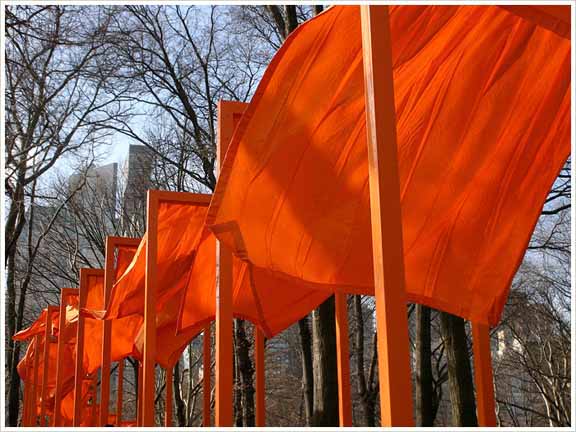
|
|||||||||||||||||||||||||||||||||||||||||||||||||||||||||||||||||||||||||||||||||||||||||||||||||||||||||||||||||||||||||||||||||||||||||||||||||||||||||||||||||||||||||||||||||||||||||||||||||||||||||||||||||||||||||||||||||||||||||||||||||||||||||||||||||||||||||||||||||||||||||||||||||||||||||||||||||||||||||||||||||||||||||||||||||||||||||||||||||||||||||||||||||||||||||||||||||||||||||||||||||||||||||||||||||||||||||||||||||||||||||||||||||||||||||||||||||||||||||||||||||||||||||||||||||||||||||||||||||||||||||||||||||||||||||||||||||||||||||||||||||||||||||||||||||||||||||||||||||||||||||||||||||||||||||||||||||||||||||||||||||||||||||||||||||||||||||||||||||||||||||||||||||||||||||||||||||||||||||||||||||||||||||||||||||||||||||||||||||||||||||||||||||||||||||||||||||||||||||||||||||||||||||||||||||||||||||||||||||||||||||||||||||||||||||||||||||||||||||||||||||||||||||||||||||||||||||||||||||||||||||||||||||||||||||||||||||||||||||||||||||||||||||||||||||||||||||||||||||||||||
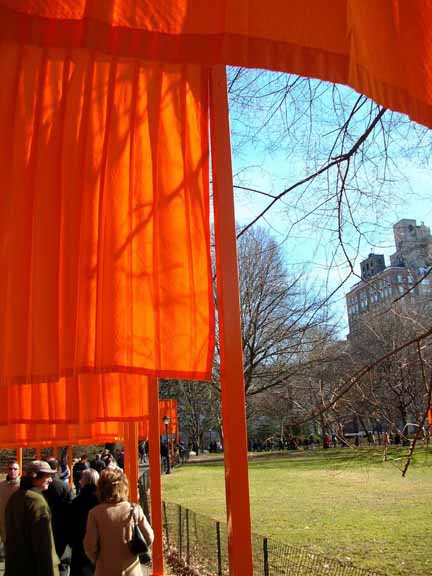
|
|||||||||||||||||||||||||||||||||||||||||||||||||||||||||||||||||||||||||||||||||||||||||||||||||||||||||||||||||||||||||||||||||||||||||||||||||||||||||||||||||||||||||||||||||||||||||||||||||||||||||||||||||||||||||||||||||||||||||||||||||||||||||||||||||||||||||||||||||||||||||||||||||||||||||||||||||||||||||||||||||||||||||||||||||||||||||||||||||||||||||||||||||||||||||||||||||||||||||||||||||||||||||||||||||||||||||||||||||||||||||||||||||||||||||||||||||||||||||||||||||||||||||||||||||||||||||||||||||||||||||||||||||||||||||||||||||||||||||||||||||||||||||||||||||||||||||||||||||||||||||||||||||||||||||||||||||||||||||||||||||||||||||||||||||||||||||||||||||||||||||||||||||||||||||||||||||||||||||||||||||||||||||||||||||||||||||||||||||||||||||||||||||||||||||||||||||||||||||||||||||||||||||||||||||||||||||||||||||||||||||||||||||||||||||||||||||||||||||||||||||||||||||||||||||||||||||||||||||||||||||||||||||||||||||||||||||||||||||||||||||||||||||||||||||||||||||||||||||||||||
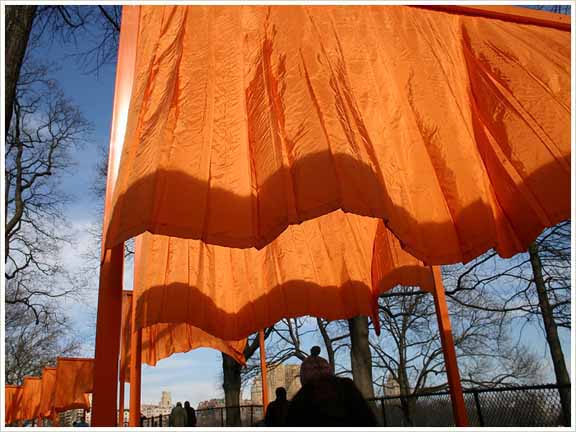
|
|||||||||||||||||||||||||||||||||||||||||||||||||||||||||||||||||||||||||||||||||||||||||||||||||||||||||||||||||||||||||||||||||||||||||||||||||||||||||||||||||||||||||||||||||||||||||||||||||||||||||||||||||||||||||||||||||||||||||||||||||||||||||||||||||||||||||||||||||||||||||||||||||||||||||||||||||||||||||||||||||||||||||||||||||||||||||||||||||||||||||||||||||||||||||||||||||||||||||||||||||||||||||||||||||||||||||||||||||||||||||||||||||||||||||||||||||||||||||||||||||||||||||||||||||||||||||||||||||||||||||||||||||||||||||||||||||||||||||||||||||||||||||||||||||||||||||||||||||||||||||||||||||||||||||||||||||||||||||||||||||||||||||||||||||||||||||||||||||||||||||||||||||||||||||||||||||||||||||||||||||||||||||||||||||||||||||||||||||||||||||||||||||||||||||||||||||||||||||||||||||||||||||||||||||||||||||||||||||||||||||||||||||||||||||||||||||||||||||||||||||||||||||||||||||||||||||||||||||||||||||||||||||||||||||||||||||||||||||||||||||||||||||||||||||||||||||||||||||||||||

|
|||||||||||||||||||||||||||||||||||||||||||||||||||||||||||||||||||||||||||||||||||||||||||||||||||||||||||||||||||||||||||||||||||||||||||||||||||||||||||||||||||||||||||||||||||||||||||||||||||||||||||||||||||||||||||||||||||||||||||||||||||||||||||||||||||||||||||||||||||||||||||||||||||||||||||||||||||||||||||||||||||||||||||||||||||||||||||||||||||||||||||||||||||||||||||||||||||||||||||||||||||||||||||||||||||||||||||||||||||||||||||||||||||||||||||||||||||||||||||||||||||||||||||||||||||||||||||||||||||||||||||||||||||||||||||||||||||||||||||||||||||||||||||||||||||||||||||||||||||||||||||||||||||||||||||||||||||||||||||||||||||||||||||||||||||||||||||||||||||||||||||||||||||||||||||||||||||||||||||||||||||||||||||||||||||||||||||||||||||||||||||||||||||||||||||||||||||||||||||||||||||||||||||||||||||||||||||||||||||||||||||||||||||||||||||||||||||||||||||||||||||||||||||||||||||||||||||||||||||||||||||||||||||||||||||||||||||||||||||||||||||||||||||||||||||||||||||||||||||||||
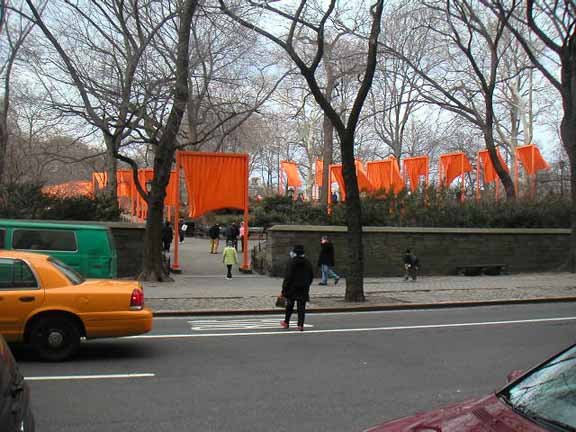
|
|||||||||||||||||||||||||||||||||||||||||||||||||||||||||||||||||||||||||||||||||||||||||||||||||||||||||||||||||||||||||||||||||||||||||||||||||||||||||||||||||||||||||||||||||||||||||||||||||||||||||||||||||||||||||||||||||||||||||||||||||||||||||||||||||||||||||||||||||||||||||||||||||||||||||||||||||||||||||||||||||||||||||||||||||||||||||||||||||||||||||||||||||||||||||||||||||||||||||||||||||||||||||||||||||||||||||||||||||||||||||||||||||||||||||||||||||||||||||||||||||||||||||||||||||||||||||||||||||||||||||||||||||||||||||||||||||||||||||||||||||||||||||||||||||||||||||||||||||||||||||||||||||||||||||||||||||||||||||||||||||||||||||||||||||||||||||||||||||||||||||||||||||||||||||||||||||||||||||||||||||||||||||||||||||||||||||||||||||||||||||||||||||||||||||||||||||||||||||||||||||||||||||||||||||||||||||||||||||||||||||||||||||||||||||||||||||||||||||||||||||||||||||||||||||||||||||||||||||||||||||||||||||||||||||||||||||||||||||||||||||||||||||||||||||||||||||||||||||||||||

|
|||||||||||||||||||||||||||||||||||||||||||||||||||||||||||||||||||||||||||||||||||||||||||||||||||||||||||||||||||||||||||||||||||||||||||||||||||||||||||||||||||||||||||||||||||||||||||||||||||||||||||||||||||||||||||||||||||||||||||||||||||||||||||||||||||||||||||||||||||||||||||||||||||||||||||||||||||||||||||||||||||||||||||||||||||||||||||||||||||||||||||||||||||||||||||||||||||||||||||||||||||||||||||||||||||||||||||||||||||||||||||||||||||||||||||||||||||||||||||||||||||||||||||||||||||||||||||||||||||||||||||||||||||||||||||||||||||||||||||||||||||||||||||||||||||||||||||||||||||||||||||||||||||||||||||||||||||||||||||||||||||||||||||||||||||||||||||||||||||||||||||||||||||||||||||||||||||||||||||||||||||||||||||||||||||||||||||||||||||||||||||||||||||||||||||||||||||||||||||||||||||||||||||||||||||||||||||||||||||||||||||||||||||||||||||||||||||||||||||||||||||||||||||||||||||||||||||||||||||||||||||||||||||||||||||||||||||||||||||||||||||||||||||||||||||||||||||||||||||||||
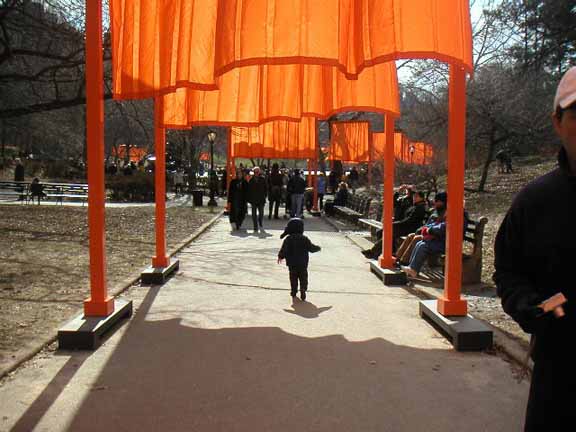
|
|||||||||||||||||||||||||||||||||||||||||||||||||||||||||||||||||||||||||||||||||||||||||||||||||||||||||||||||||||||||||||||||||||||||||||||||||||||||||||||||||||||||||||||||||||||||||||||||||||||||||||||||||||||||||||||||||||||||||||||||||||||||||||||||||||||||||||||||||||||||||||||||||||||||||||||||||||||||||||||||||||||||||||||||||||||||||||||||||||||||||||||||||||||||||||||||||||||||||||||||||||||||||||||||||||||||||||||||||||||||||||||||||||||||||||||||||||||||||||||||||||||||||||||||||||||||||||||||||||||||||||||||||||||||||||||||||||||||||||||||||||||||||||||||||||||||||||||||||||||||||||||||||||||||||||||||||||||||||||||||||||||||||||||||||||||||||||||||||||||||||||||||||||||||||||||||||||||||||||||||||||||||||||||||||||||||||||||||||||||||||||||||||||||||||||||||||||||||||||||||||||||||||||||||||||||||||||||||||||||||||||||||||||||||||||||||||||||||||||||||||||||||||||||||||||||||||||||||||||||||||||||||||||||||||||||||||||||||||||||||||||||||||||||||||||||||||||||||||||||||
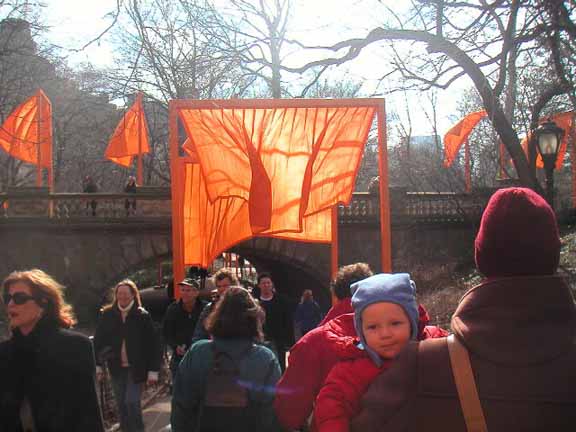
|
|||||||||||||||||||||||||||||||||||||||||||||||||||||||||||||||||||||||||||||||||||||||||||||||||||||||||||||||||||||||||||||||||||||||||||||||||||||||||||||||||||||||||||||||||||||||||||||||||||||||||||||||||||||||||||||||||||||||||||||||||||||||||||||||||||||||||||||||||||||||||||||||||||||||||||||||||||||||||||||||||||||||||||||||||||||||||||||||||||||||||||||||||||||||||||||||||||||||||||||||||||||||||||||||||||||||||||||||||||||||||||||||||||||||||||||||||||||||||||||||||||||||||||||||||||||||||||||||||||||||||||||||||||||||||||||||||||||||||||||||||||||||||||||||||||||||||||||||||||||||||||||||||||||||||||||||||||||||||||||||||||||||||||||||||||||||||||||||||||||||||||||||||||||||||||||||||||||||||||||||||||||||||||||||||||||||||||||||||||||||||||||||||||||||||||||||||||||||||||||||||||||||||||||||||||||||||||||||||||||||||||||||||||||||||||||||||||||||||||||||||||||||||||||||||||||||||||||||||||||||||||||||||||||||||||||||||||||||||||||||||||||||||||||||||||||||||||||||||||||||
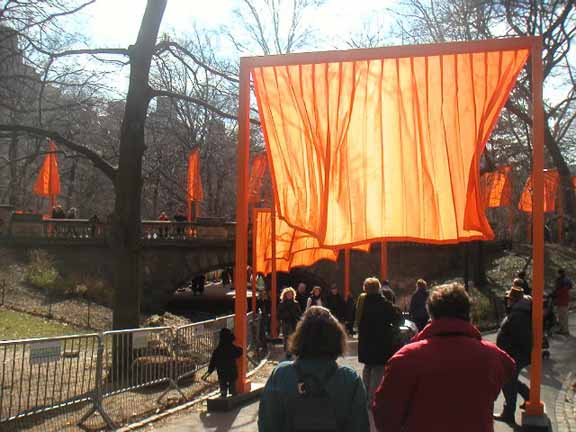
|
|||||||||||||||||||||||||||||||||||||||||||||||||||||||||||||||||||||||||||||||||||||||||||||||||||||||||||||||||||||||||||||||||||||||||||||||||||||||||||||||||||||||||||||||||||||||||||||||||||||||||||||||||||||||||||||||||||||||||||||||||||||||||||||||||||||||||||||||||||||||||||||||||||||||||||||||||||||||||||||||||||||||||||||||||||||||||||||||||||||||||||||||||||||||||||||||||||||||||||||||||||||||||||||||||||||||||||||||||||||||||||||||||||||||||||||||||||||||||||||||||||||||||||||||||||||||||||||||||||||||||||||||||||||||||||||||||||||||||||||||||||||||||||||||||||||||||||||||||||||||||||||||||||||||||||||||||||||||||||||||||||||||||||||||||||||||||||||||||||||||||||||||||||||||||||||||||||||||||||||||||||||||||||||||||||||||||||||||||||||||||||||||||||||||||||||||||||||||||||||||||||||||||||||||||||||||||||||||||||||||||||||||||||||||||||||||||||||||||||||||||||||||||||||||||||||||||||||||||||||||||||||||||||||||||||||||||||||||||||||||||||||||||||||||||||||||||||||||||||||||
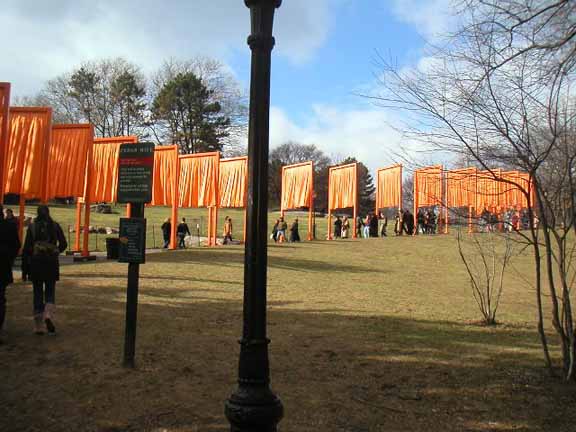
|
|||||||||||||||||||||||||||||||||||||||||||||||||||||||||||||||||||||||||||||||||||||||||||||||||||||||||||||||||||||||||||||||||||||||||||||||||||||||||||||||||||||||||||||||||||||||||||||||||||||||||||||||||||||||||||||||||||||||||||||||||||||||||||||||||||||||||||||||||||||||||||||||||||||||||||||||||||||||||||||||||||||||||||||||||||||||||||||||||||||||||||||||||||||||||||||||||||||||||||||||||||||||||||||||||||||||||||||||||||||||||||||||||||||||||||||||||||||||||||||||||||||||||||||||||||||||||||||||||||||||||||||||||||||||||||||||||||||||||||||||||||||||||||||||||||||||||||||||||||||||||||||||||||||||||||||||||||||||||||||||||||||||||||||||||||||||||||||||||||||||||||||||||||||||||||||||||||||||||||||||||||||||||||||||||||||||||||||||||||||||||||||||||||||||||||||||||||||||||||||||||||||||||||||||||||||||||||||||||||||||||||||||||||||||||||||||||||||||||||||||||||||||||||||||||||||||||||||||||||||||||||||||||||||||||||||||||||||||||||||||||||||||||||||||||||||||||||||||||||||||
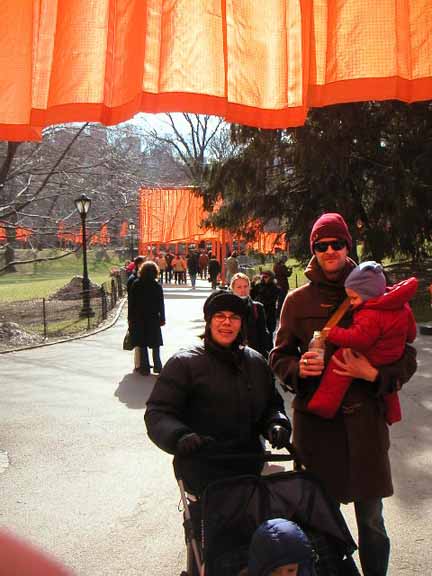
|
|||||||||||||||||||||||||||||||||||||||||||||||||||||||||||||||||||||||||||||||||||||||||||||||||||||||||||||||||||||||||||||||||||||||||||||||||||||||||||||||||||||||||||||||||||||||||||||||||||||||||||||||||||||||||||||||||||||||||||||||||||||||||||||||||||||||||||||||||||||||||||||||||||||||||||||||||||||||||||||||||||||||||||||||||||||||||||||||||||||||||||||||||||||||||||||||||||||||||||||||||||||||||||||||||||||||||||||||||||||||||||||||||||||||||||||||||||||||||||||||||||||||||||||||||||||||||||||||||||||||||||||||||||||||||||||||||||||||||||||||||||||||||||||||||||||||||||||||||||||||||||||||||||||||||||||||||||||||||||||||||||||||||||||||||||||||||||||||||||||||||||||||||||||||||||||||||||||||||||||||||||||||||||||||||||||||||||||||||||||||||||||||||||||||||||||||||||||||||||||||||||||||||||||||||||||||||||||||||||||||||||||||||||||||||||||||||||||||||||||||||||||||||||||||||||||||||||||||||||||||||||||||||||||||||||||||||||||||||||||||||||||||||||||||||||||||||||||||||||||||
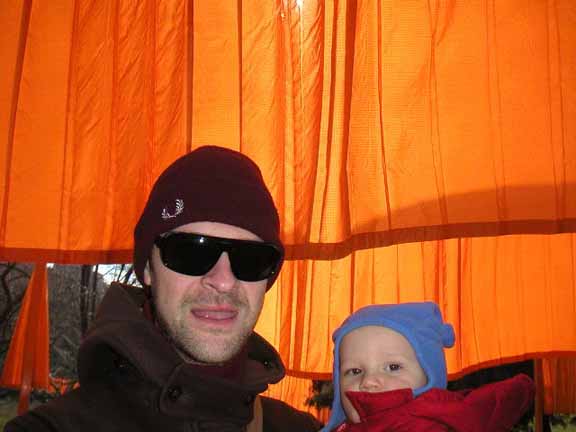
|
|||||||||||||||||||||||||||||||||||||||||||||||||||||||||||||||||||||||||||||||||||||||||||||||||||||||||||||||||||||||||||||||||||||||||||||||||||||||||||||||||||||||||||||||||||||||||||||||||||||||||||||||||||||||||||||||||||||||||||||||||||||||||||||||||||||||||||||||||||||||||||||||||||||||||||||||||||||||||||||||||||||||||||||||||||||||||||||||||||||||||||||||||||||||||||||||||||||||||||||||||||||||||||||||||||||||||||||||||||||||||||||||||||||||||||||||||||||||||||||||||||||||||||||||||||||||||||||||||||||||||||||||||||||||||||||||||||||||||||||||||||||||||||||||||||||||||||||||||||||||||||||||||||||||||||||||||||||||||||||||||||||||||||||||||||||||||||||||||||||||||||||||||||||||||||||||||||||||||||||||||||||||||||||||||||||||||||||||||||||||||||||||||||||||||||||||||||||||||||||||||||||||||||||||||||||||||||||||||||||||||||||||||||||||||||||||||||||||||||||||||||||||||||||||||||||||||||||||||||||||||||||||||||||||||||||||||||||||||||||||||||||||||||||||||||||||||||||||||||||||

|
|||||||||||||||||||||||||||||||||||||||||||||||||||||||||||||||||||||||||||||||||||||||||||||||||||||||||||||||||||||||||||||||||||||||||||||||||||||||||||||||||||||||||||||||||||||||||||||||||||||||||||||||||||||||||||||||||||||||||||||||||||||||||||||||||||||||||||||||||||||||||||||||||||||||||||||||||||||||||||||||||||||||||||||||||||||||||||||||||||||||||||||||||||||||||||||||||||||||||||||||||||||||||||||||||||||||||||||||||||||||||||||||||||||||||||||||||||||||||||||||||||||||||||||||||||||||||||||||||||||||||||||||||||||||||||||||||||||||||||||||||||||||||||||||||||||||||||||||||||||||||||||||||||||||||||||||||||||||||||||||||||||||||||||||||||||||||||||||||||||||||||||||||||||||||||||||||||||||||||||||||||||||||||||||||||||||||||||||||||||||||||||||||||||||||||||||||||||||||||||||||||||||||||||||||||||||||||||||||||||||||||||||||||||||||||||||||||||||||||||||||||||||||||||||||||||||||||||||||||||||||||||||||||||||||||||||||||||||||||||||||||||||||||||||||||||||||||||||||||||||

|
|||||||||||||||||||||||||||||||||||||||||||||||||||||||||||||||||||||||||||||||||||||||||||||||||||||||||||||||||||||||||||||||||||||||||||||||||||||||||||||||||||||||||||||||||||||||||||||||||||||||||||||||||||||||||||||||||||||||||||||||||||||||||||||||||||||||||||||||||||||||||||||||||||||||||||||||||||||||||||||||||||||||||||||||||||||||||||||||||||||||||||||||||||||||||||||||||||||||||||||||||||||||||||||||||||||||||||||||||||||||||||||||||||||||||||||||||||||||||||||||||||||||||||||||||||||||||||||||||||||||||||||||||||||||||||||||||||||||||||||||||||||||||||||||||||||||||||||||||||||||||||||||||||||||||||||||||||||||||||||||||||||||||||||||||||||||||||||||||||||||||||||||||||||||||||||||||||||||||||||||||||||||||||||||||||||||||||||||||||||||||||||||||||||||||||||||||||||||||||||||||||||||||||||||||||||||||||||||||||||||||||||||||||||||||||||||||||||||||||||||||||||||||||||||||||||||||||||||||||||||||||||||||||||||||||||||||||||||||||||||||||||||||||||||||||||||||||||||||||||||
|
|
|||||||||||||||||||||||||||||||||||||||||||||||||||||||||||||||||||||||||||||||||||||||||||||||||||||||||||||||||||||||||||||||||||||||||||||||||||||||||||||||||||||||||||||||||||||||||||||||||||||||||||||||||||||||||||||||||||||||||||||||||||||||||||||||||||||||||||||||||||||||||||||||||||||||||||||||||||||||||||||||||||||||||||||||||||||||||||||||||||||||||||||||||||||||||||||||||||||||||||||||||||||||||||||||||||||||||||||||||||||||||||||||||||||||||||||||||||||||||||||||||||||||||||||||||||||||||||||||||||||||||||||||||||||||||||||||||||||||||||||||||||||||||||||||||||||||||||||||||||||||||||||||||||||||||||||||||||||||||||||||||||||||||||||||||||||||||||||||||||||||||||||||||||||||||||||||||||||||||||||||||||||||||||||||||||||||||||||||||||||||||||||||||||||||||||||||||||||||||||||||||||||||||||||||||||||||||||||||||||||||||||||||||||||||||||||||||||||||||||||||||||||||||||||||||||||||||||||||||||||||||||||||||||||||||||||||||||||||||||||||||||||||||||||||||||||||||||||||||||||||
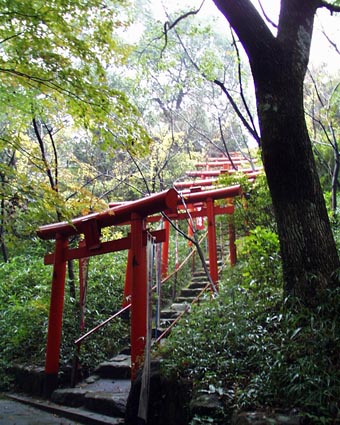 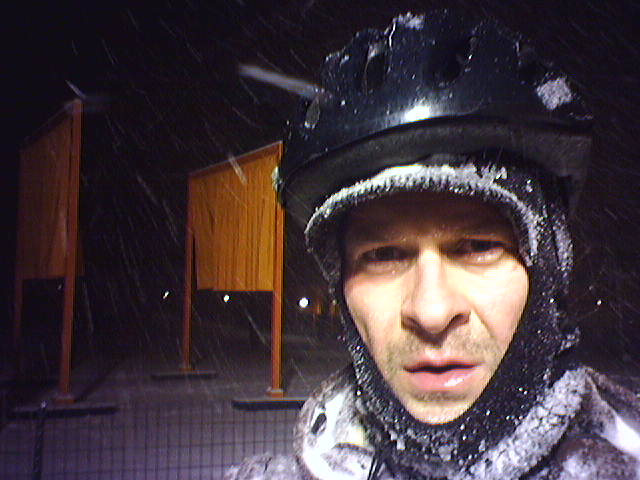
Torii Gates |
|||||||||||||||||||||||||||||||||||||||||||||||||||||||||||||||||||||||||||||||||||||||||||||||||||||||||||||||||||||||||||||||||||||||||||||||||||||||||||||||||||||||||||||||||||||||||||||||||||||||||||||||||||||||||||||||||||||||||||||||||||||||||||||||||||||||||||||||||||||||||||||||||||||||||||||||||||||||||||||||||||||||||||||||||||||||||||||||||||||||||||||||||||||||||||||||||||||||||||||||||||||||||||||||||||||||||||||||||||||||||||||||||||||||||||||||||||||||||||||||||||||||||||||||||||||||||||||||||||||||||||||||||||||||||||||||||||||||||||||||||||||||||||||||||||||||||||||||||||||||||||||||||||||||||||||||||||||||||||||||||||||||||||||||||||||||||||||||||||||||||||||||||||||||||||||||||||||||||||||||||||||||||||||||||||||||||||||||||||||||||||||||||||||||||||||||||||||||||||||||||||||||||||||||||||||||||||||||||||||||||||||||||||||||||||||||||||||||||||||||||||||||||||||||||||||||||||||||||||||||||||||||||||||||||||||||||||||||||||||||||||||||||||||||||||||||||||||||||||||||
With thanks to www.christojeanneclaude.net |
|||||||||||||||||||||||||||||||||||||||||||||||||||||||||||||||||||||||||||||||||||||||||||||||||||||||||||||||||||||||||||||||||||||||||||||||||||||||||||||||||||||||||||||||||||||||||||||||||||||||||||||||||||||||||||||||||||||||||||||||||||||||||||||||||||||||||||||||||||||||||||||||||||||||||||||||||||||||||||||||||||||||||||||||||||||||||||||||||||||||||||||||||||||||||||||||||||||||||||||||||||||||||||||||||||||||||||||||||||||||||||||||||||||||||||||||||||||||||||||||||||||||||||||||||||||||||||||||||||||||||||||||||||||||||||||||||||||||||||||||||||||||||||||||||||||||||||||||||||||||||||||||||||||||||||||||||||||||||||||||||||||||||||||||||||||||||||||||||||||||||||||||||||||||||||||||||||||||||||||||||||||||||||||||||||||||||||||||||||||||||||||||||||||||||||||||||||||||||||||||||||||||||||||||||||||||||||||||||||||||||||||||||||||||||||||||||||||||||||||||||||||||||||||||||||||||||||||||||||||||||||||||||||||||||||||||||||||||||||||||||||||||||||||||||||||||||||||||||||||||
|
NY1
February 16, 2005 The Gates In Central Park Are Vandalized 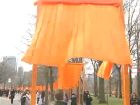 After a grand unveiling over the weekend, “The Gates” in Central Park have apparently been vandalized. Some graffiti was reportedly found on one of the gates, and pieces of the fabric were cut as well. No arrests have been made. But the artists, Christo and Jeanne-Claude, did not seem bothered when they heard of the vandalism. “We don’t react,” said Jeanne-Claude. “We are not reactors; we are creators.” Over 7,500 gates draped with flowing saffron-colored fabric have been erected over 23 miles of pathways in Central Park to create the largest public artwork in the city’s history. “The Gates” will be up through February 27. Copyright © 2005 NY1 News |
|||||||||||||||||||||||||||||||||||||||||||||||||||||||||||||||||||||||||||||||||||||||||||||||||||||||||||||||||||||||||||||||||||||||||||||||||||||||||||||||||||||||||||||||||||||||||||||||||||||||||||||||||||||||||||||||||||||||||||||||||||||||||||||||||||||||||||||||||||||||||||||||||||||||||||||||||||||||||||||||||||||||||||||||||||||||||||||||||||||||||||||||||||||||||||||||||||||||||||||||||||||||||||||||||||||||||||||||||||||||||||||||||||||||||||||||||||||||||||||||||||||||||||||||||||||||||||||||||||||||||||||||||||||||||||||||||||||||||||||||||||||||||||||||||||||||||||||||||||||||||||||||||||||||||||||||||||||||||||||||||||||||||||||||||||||||||||||||||||||||||||||||||||||||||||||||||||||||||||||||||||||||||||||||||||||||||||||||||||||||||||||||||||||||||||||||||||||||||||||||||||||||||||||||||||||||||||||||||||||||||||||||||||||||||||||||||||||||||||||||||||||||||||||||||||||||||||||||||||||||||||||||||||||||||||||||||||||||||||||||||||||||||||||||||||||||||||||||||||||||
|
February 17, 2005
Young Critics See 'The Gates' and Offer Their Reviews: Mixed By JULIE SALAMON 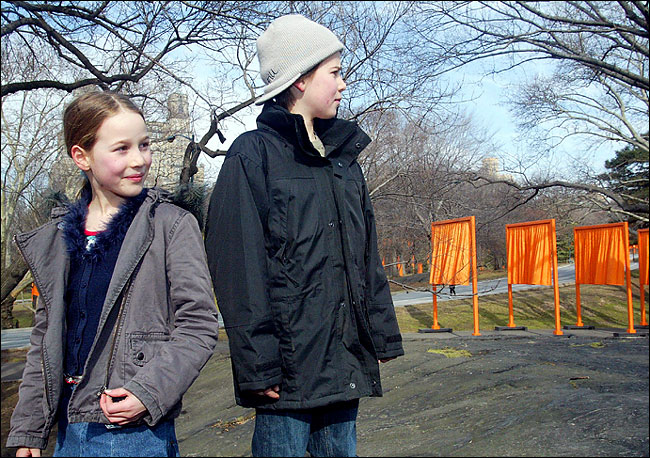 Bella, 9, and Samuel Glanville, 11, visitors from London. Samuel uses terms like Fauvism and Pointillism. For Kate Rosenberg, 9, a third-grade student at Rodeph Sholom, a private school on the Upper West Side, the saffron-colored gates dreamed up by the artist Christo and his wife, Jeanne-Claude, have altered her vision of Central Park. "Before I didn't really look at the park," she said. "I didn't see how beautiful it is. "These gates, and there are billions of them, make me feel I will not look at the park the same way again." There are actually 7,532 gates spread along 23 miles of the park's pathways - not quite billions, but more than enough to loom large in a child's imagination. And in the opinion of some children, far too many. Perhaps especially in New York, it is never too soon to become a critic. Many youngsters wondered if this was art at all, and if it was, did it have to cost $21 million? "They just wasted their money on nothing," declared Ikim Powell, 10, who attends P.S. 368 in the Bushwick section of Brooklyn. "They should at least have paintings behind them." His classmate, Tyre Brooks, felt "The Gates" was an unnecessary artificial imposition on the park's natural beauty. "Now it looks like a stage, like on wrestling," he said. "I just want to ride my bike and play. I'd like to come back to the park when the flags aren't here. They look cheap." But another student from P.S. 368, Tyquam Nimmons, on his first visit to Central Park, disagreed. "It is artistic," he said. "There are a lot of them all around, and they're the same color and they give me a good feeling." He was about to elaborate but instead ran off to catch a football being tossed around by a group from his school. Martha Epstein, a Rodeph Sholom third-grader, sitting with her classmates on a hill made of boulders, had just finished a sketch of one of the gates. "This is about my millionth time seeing 'The Gates,' " she sighed. She said she was not much impressed on her first visit last weekend with her family, right after the 116,389 miles of saffron fabric were unfurled. "It was really crowded and I didn't like the orange," she said. "I wished it was green, a park color." Subsequent visits have somewhat altered her view. "I don't like the look of them but I like the way everybody is at the park and happy," she said. Lucinda Gresswell brought her two children to New York from London for their midterm break, in part because the Christo gates would be up. In the 1970's, Ms. Gresswell's father had bought a Christo drawing of either a pyramid or a sphinx, she could not remember which. So two weeks ago she booked a flight. Her 11-year-old son, Samuel Glanville, had no doubt that the gates were art. "Art is Fauvism, Pointillism, abstract," he said, looking at rows of pleated nylon fabric floating slightly at the whiff of a breeze. "This is Christo - is that his name, I forget? - this is his art, his own interpretation." Samuel liked knowing that "The Gates" would be on view for only two weeks. "Like all art, if it's always there it doesn't feel so special," he said, with the savvy of a shrewd museum director. "It's like a special Matisse show at a museum. You feel lucky if you get to see it." For his 9-year-old sister, Bella, on her first visit to New York, confronting "The Gates" was another in a series of crucial discoveries: the brilliant lights of Times Square, and Century 21, the bargain store near ground zero, where Bella acquired the very cool shirt she was wearing. She was not as certain as her brother of the artistic merit of the gates. "Well, yeah," she said, when asked if they were art. Then, she amended. "Not so much," she said. "They're kind of like flags. I prefer messy art, like blobs." But she was happy that Christo's project helped lure her family to Central Park, where she and Samuel worked up a healthy glow climbing on the rocks. "It wouldn't be too ordinary even without the flags," she said. "Most parks have grass and trees, not rocks. In England, unless it's a heath, you wouldn't have big rocks and stones." Sean Springer, a student from the Rhode Island School of Design on leave to work as a volunteer for "The Gates," said he had learned from the school groups wandering through. "There was an English class writing about their feelings, and I was wondering about the connections between literature and this work," he said. "My opinion is the art makes a poetic statement, and they said art is a form of poetry." Mr. Springer helped install "The Gates," will help take it down, and stands at the ready to untangle fabric with a pole capped by a tennis ball. He also answers questions and hands out swatches of the nylon saffron fabric to passers-by. "That's one thing that's the same for kids and adults," he said. "If they know about the swatches, they want them." 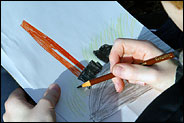 A student records impressions of "The Gates." Copyright 2005 The New York Times Company |
|||||||||||||||||||||||||||||||||||||||||||||||||||||||||||||||||||||||||||||||||||||||||||||||||||||||||||||||||||||||||||||||||||||||||||||||||||||||||||||||||||||||||||||||||||||||||||||||||||||||||||||||||||||||||||||||||||||||||||||||||||||||||||||||||||||||||||||||||||||||||||||||||||||||||||||||||||||||||||||||||||||||||||||||||||||||||||||||||||||||||||||||||||||||||||||||||||||||||||||||||||||||||||||||||||||||||||||||||||||||||||||||||||||||||||||||||||||||||||||||||||||||||||||||||||||||||||||||||||||||||||||||||||||||||||||||||||||||||||||||||||||||||||||||||||||||||||||||||||||||||||||||||||||||||||||||||||||||||||||||||||||||||||||||||||||||||||||||||||||||||||||||||||||||||||||||||||||||||||||||||||||||||||||||||||||||||||||||||||||||||||||||||||||||||||||||||||||||||||||||||||||||||||||||||||||||||||||||||||||||||||||||||||||||||||||||||||||||||||||||||||||||||||||||||||||||||||||||||||||||||||||||||||||||||||||||||||||||||||||||||||||||||||||||||||||||||||||||||||||||
|
February 17, 2005
In City of Ads, 'The Gates' Stand Apart By DAVID W. DUNLAP NOT a word. That may be one of the greatest gifts of "The Gates" to New York City: a sponsor-free public installation in Central Park. At a time when the civic realm is blanketed with corporate promotion, from lampposts to landmarks, the artists Christo and Jeanne-Claude have shown that it is possible to hang 1,067,330 square feet of nylon in the heart of Manhattan - almost 50 acres of potential display space - without a slogan, trademark or logo. "I would have had a much more difficult time going to community boards, the Municipal Art Society and other civic groups making a case for it if there had been corporate logos on it," said Adrian Benepe, the parks commissioner. The artists are paying the estimated $21 million cost of the 16-day installation. They refuse sponsors, they say, because they want to work "in total freedom." Of course, in one sense, their work promotes themselves. Whether on the gray smocks worn by monitors along the walkways or in the piles of merchandise at the gift shops, there is no mistaking who gets top billing: Christo and Jeanne-Claude. But the couple are not trying to sell real estate or financial services, airline or museum tickets. To the extent that they may be trying to move "Gates" merchandise - or at least to satisfy the demand for it - they are not receiving income from the sales, which largely benefit city parks, said Megan Sheekey, a spokeswoman for the project. And the 16-foot-high orange gates are free of advertising. "There is not one image stamped on it," marveled Vanessa Gruen, director of special projects at the Municipal Art Society. "We're so used to seeing that kind of fabric used to drape buildings and for huge signs." For instance, the society has criticized as "obnoxious" a billboard modeled on a $10 bill that temporarily covers the front of the landmark New-York Historical Society on Central Park West, promoting the Alexander Hamilton exhibition. Another landmark near the park, the former United States Rubber Company Building at Broadway and 58th Street, now partly cocooned in scaffolding, has been turned into a temporary advertising kiosk for Independence Air. Around the park itself are dozens of three-by-eight-foot lamppost banners maintained by NYC & Company, the city's tourism marketing organization. Some currently feature paintings of dancers by Susan Rothenberg. These come emblazoned with the logo of the financial service firm UBS, in connection with a show at the Museum of Modern Art. Other banners along Central Park South are more like pure advertising. They show the logo of the real estate company CB Richard Ellis under a picture of Times Square with the legend "Real Estate Capital of the World." Cristyne L. Nicholas, the president and chief executive of NYC & Company, said banners around the city generate about $600,000 a year for the nonprofit organization, which in turn helps promote cultural institutions and events. "As far as corporate logos," she said, "that pays for the program, so that's necessary. All public art projects can't be funded by the generosity of Christo and Jeanne-Claude." Through the CVJ Corporation, of which Jeanne-Claude is president, the couple finance their projects by selling drawings, models, studies, lithographs and other artwork. TO date, more than 1 million visitors have viewed "The Gates," Ms. Sheekey said. You would think some corporation would salivate at this prospect, maybe one whose graphic identity is dominated by the color orange - like Home Depot or the ING Group - or one whose products might be conjured in viewers' minds by billowing curtains or rivers of orange, like the Coca-Cola Company (Minute Maid and Fanta) or Procter & Gamble (Downy fabric softener). "In other projects, we have received offers of sponsorship and have always said a flat no," Jeanne-Claude said in a telephone interview on Tuesday. "But for 'The Gates,' we have not received any offers of sponsorship because we think - Christo and I - that by now, they know we don't say yes, ever. So nobody even bothered." Asked about the proliferation of commercial imagery elsewhere in the city, Jeanne-Claude conferred briefly with her husband before she returned to the phone. "Christo answered, and I repeat word for word, 'I never think of advertising.' " Copyright 2005 The New York Times Company |
|||||||||||||||||||||||||||||||||||||||||||||||||||||||||||||||||||||||||||||||||||||||||||||||||||||||||||||||||||||||||||||||||||||||||||||||||||||||||||||||||||||||||||||||||||||||||||||||||||||||||||||||||||||||||||||||||||||||||||||||||||||||||||||||||||||||||||||||||||||||||||||||||||||||||||||||||||||||||||||||||||||||||||||||||||||||||||||||||||||||||||||||||||||||||||||||||||||||||||||||||||||||||||||||||||||||||||||||||||||||||||||||||||||||||||||||||||||||||||||||||||||||||||||||||||||||||||||||||||||||||||||||||||||||||||||||||||||||||||||||||||||||||||||||||||||||||||||||||||||||||||||||||||||||||||||||||||||||||||||||||||||||||||||||||||||||||||||||||||||||||||||||||||||||||||||||||||||||||||||||||||||||||||||||||||||||||||||||||||||||||||||||||||||||||||||||||||||||||||||||||||||||||||||||||||||||||||||||||||||||||||||||||||||||||||||||||||||||||||||||||||||||||||||||||||||||||||||||||||||||||||||||||||||||||||||||||||||||||||||||||||||||||||||||||||||||||||||||||||||||
|
February 17, 2005
METRO MATTERS How Banners Navigated the Hurdles By JOYCE PURNICK FOR nearly three years, Vince Davenport has lived and worked in New York, planning and directing installation of "The Gates" in Central Park. He chose the materials, devised engineering solutions, negotiated with suppliers, selected contractors and dealt with park neighbors and a municipal hierarchy as muddled as rush-hour traffic. The project's engineer says he can't quite yet believe that he and his team pulled it off, but they did. And now seems a good time to ask what he thinks of New York. How tough did he find the city, once it finally gave the project the go-ahead? "It is a difficult place to work, but I don't think it's that difficult if you do it right," Mr. Davenport said yesterday. "Do your homework, and don't try to beat the system, but work with it. There are so many bureaucracies. Everybody wants to be in charge of their own domain, and I can understand that. But go through the hierarchy, sit down and draw a plan and present it - as opposed to trying to bulldoze your way through." With occasional exceptions, he didn't even find New Yorkers rude, said Mr. Davenport, a general contractor originally from Kansas City who sounds uncannily like another Missouri native, Harry S. Truman, and seems just as direct (if less crusty). Told that some who worked on the project say that they considered it to be his - becoming Christo and Jeanne-Claude's only when the saffron material was unfurled on Saturday - he chose different language, but acknowledged that the technical translation of the artistic design, the engineering, "was strictly mine." Though working in New York for the first time, he seems to have anticipated most problems, except one. Mr. Davenport said that while he fully expected New York to be expensive, he found that labor, trucking and parking were so much more expensive than he anticipated that the project's costs grew to more than $20 million from the $15 million he originally projected. What about that entrenched New York institution, bribes - what did they cost? "Not a dime," he said. "The suggestion was made a few times, 'Is there something we can do for you?' But never out and out, and I don't believe in it." Even for someone who's worked in Los Angeles and Berlin, the city's complexity sounds as though it was bewildering - the multiple rules from multiple agencies. "But I don't have a problem with it," continued Mr. Davenport, sitting in his trailer near the Boathouse yesterday morning. "To me, Central Park is the eighth wonder of the world - a gorgeous, beautiful park. I understand why you have to have so many rules. It's the only way, when so many people are coming into the park daily." IT was the rule not to disturb the park that complicated approval of the project, first proposed over a quarter-century ago and rejected. That was mostly because Central Park was in bad shape, partly because the park design called for making it worse by drilling 15,000 holes in the park to anchor the gates. When the artists decided to try again in 2002, Mr. Davenport told them: " 'This is impossible, I can't do this job.' I said the geology of the park will not allow you, even if you got permission, to drill simple six-inch-by-three-foot holes. You will wind up with a two-foot-diameter hole by the time you take out all the rocks you are going to hit." Even without having a solution, he recommended telling the city that the design would require no drilling. By that spring, he came up with an innovative design using heavy bases with anchor plates that serve as leveling devices to anchor the 7,500 vinyl gates. Doug Blonsky, president of the Central Park Conservancy, said yesterday that the revised design was "one of the most important factors that helped us change our feelings." Mr. Davenport, who had built tracks of houses and industrial buildings but is not a trained engineer, started working with Christo and Jeanne-Claude in 1989, when a contractor-friend from Missouri, working on the couple's umbrella installation in the Los Angeles area, needed an associate with a California license. Mr. Davenport was licensed, and intrigued. He and his wife, Jonita, have been with the two artists ever since. The couple have been living on Manhattan's East Side since February 2002, but after "The Gates" closes in 10 days, they will return to their home in Leavenworth, Wash. "I'd love to stay," he said. "But I can't afford it." Copyright 2005 The New York Times Company |
|||||||||||||||||||||||||||||||||||||||||||||||||||||||||||||||||||||||||||||||||||||||||||||||||||||||||||||||||||||||||||||||||||||||||||||||||||||||||||||||||||||||||||||||||||||||||||||||||||||||||||||||||||||||||||||||||||||||||||||||||||||||||||||||||||||||||||||||||||||||||||||||||||||||||||||||||||||||||||||||||||||||||||||||||||||||||||||||||||||||||||||||||||||||||||||||||||||||||||||||||||||||||||||||||||||||||||||||||||||||||||||||||||||||||||||||||||||||||||||||||||||||||||||||||||||||||||||||||||||||||||||||||||||||||||||||||||||||||||||||||||||||||||||||||||||||||||||||||||||||||||||||||||||||||||||||||||||||||||||||||||||||||||||||||||||||||||||||||||||||||||||||||||||||||||||||||||||||||||||||||||||||||||||||||||||||||||||||||||||||||||||||||||||||||||||||||||||||||||||||||||||||||||||||||||||||||||||||||||||||||||||||||||||||||||||||||||||||||||||||||||||||||||||||||||||||||||||||||||||||||||||||||||||||||||||||||||||||||||||||||||||||||||||||||||||||||||||||||||||||
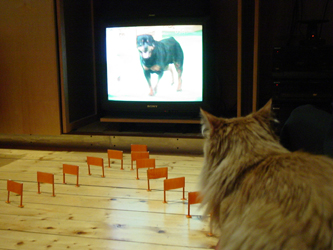 You too could have a little Christo and Jeanne Claude in your home. http://www.not-rocket-science.com/media_gates.htm |
|||||||||||||||||||||||||||||||||||||||||||||||||||||||||||||||||||||||||||||||||||||||||||||||||||||||||||||||||||||||||||||||||||||||||||||||||||||||||||||||||||||||||||||||||||||||||||||||||||||||||||||||||||||||||||||||||||||||||||||||||||||||||||||||||||||||||||||||||||||||||||||||||||||||||||||||||||||||||||||||||||||||||||||||||||||||||||||||||||||||||||||||||||||||||||||||||||||||||||||||||||||||||||||||||||||||||||||||||||||||||||||||||||||||||||||||||||||||||||||||||||||||||||||||||||||||||||||||||||||||||||||||||||||||||||||||||||||||||||||||||||||||||||||||||||||||||||||||||||||||||||||||||||||||||||||||||||||||||||||||||||||||||||||||||||||||||||||||||||||||||||||||||||||||||||||||||||||||||||||||||||||||||||||||||||||||||||||||||||||||||||||||||||||||||||||||||||||||||||||||||||||||||||||||||||||||||||||||||||||||||||||||||||||||||||||||||||||||||||||||||||||||||||||||||||||||||||||||||||||||||||||||||||||||||||||||||||||||||||||||||||||||||||||||||||||||||||||||||||||||
|
New York Times
February 20, 2005 THE CITY Seeing Orange By TED CAPLOW HE exhibit that began last weekend in Central Park is many things to many people. For me and my beagle, Hazel, with whom I share a daily walk to work through the park, "The Gates" is just a distraction. What she wants to know is, where have all the squirrels gone? What I want to know is, from the standpoint of industrial ecology, how can Christo and Jeanne-Claude justify the environmental impact of this project? On their Web site, the artists, with apparent pride, declare that "The Gates" has required 10½ million pounds of steel, 60 miles of vinyl tubing and one million square feet of nylon fabric, plus thousands upon thousands of steel plates, bolts and nuts to hold the whole thing together. The plastic tubes and fabric are described as "recyclable," but no mention is made of the fate of the steel. According to the United States Department of Energy, the steel industry in this country consumes about 18 million B.T.U.'s of raw energy to produce one ton of steel. If the cast steel in "The Gates" is typical American steel, then making it has required 97 billion B.T.U.'s, an amount equivalent to the entire annual energy consumption - including that used to run cars, furnaces, air conditioners and home appliances - of nearly 500 New York state residents. Energy for the steel industry is supplied in roughly equal thirds by coal, natural gas and electricity from the grid. Based on generally accepted rates of carbon dioxide emissions for these three sources, it appears that making steel for "The Gates" churned out 7,000 tons of carbon dioxide, equivalent to the combined output of about 1,600 average American cars for a year (carbon dioxide is viewed by most scientists as a threat to the global climate system). We would have to plant more than 200 acres of trees and grow them for 10 years to remove this carbon dioxide from the atmosphere. Central Park has an area of about 800 acres, but only part of this has trees; and the mature trees that dominate the park do not absorb carbon dioxide effectively, so we cannot look to the park to clean up the mess. In terms of sheer mass, the amount of plastic in "The Gates" is dwarfed by the steel, but emissions of carbon dioxide, dioxins and other toxins from plastics manufacturing are also a concern. The plastic chosen for the supports, polyvinyl chloride, or P.V.C., is an increasingly controversial material that releases dioxins and other carcinogens to the air and water during manufacture (and possibly afterward). Polyvinyl chloride has been singled out as "the poison plastic" by Greenpeace and other environmental groups. We now have 60 miles of it in the park. Clearly, the squirrels were not consulted on this choice. If the plastic used in "The Gates" is in fact recycled (Greenpeace warns of the "false promise" of polyvinyl chloride recycling, noting that only 1 percent gets recycled), some credit might be allowed, but at best this credit would account for only a fraction of the energy used and emissions produced. Nearly all steel is "recyclable," but the recycling rate (around 70 percent nationwide) is already accounted for in the energy intensity calculations above. More fundamentally, one cannot dismiss responsibility for the use of a primary material simply by claiming that this material could be reused. That's like claiming that no mink were harmed in making your fur coat, because you might donate it to good will someday. This is an unenlightened view of ecology. Why could the artists not have chosen a 100 percent postconsumer material, or better yet, a biologically derived material, to begin with? Such a choice would have reduced toxic emissions from the material itself, although we would still be left with the diesel trucks and propane forklifts scuttling to and from the park to carry this enormous mass in and out. It has also been loudly declared that the artists are paying for all of this out of their own pockets, through the sale of spinoff drawings and paintings to art collectors. These drawings can be viewed on the artists' Web site, and all share a pattern of coloration in which the city and the park, the buildings, the trees, the grass, are devoid of life, while the "The Gates" are portrayed in vivid color - the only objects of apparent interest to the artist. The setting could have just as easily been any other city, or no city at all, and little would change in the paintings. These depictions of a lifeless New York City are supposedly financing the materials, manpower and energy required to bring us "The Gates," but there is no mention of any fee paid for the pollution of the air and water, to say nothing of the threat to Hazel's squirrels. The choice of such an unfortunate orange hue - "saffron" to the artists, but to the rest of us more evocative of sanitation trucks, prison uniforms or road pylons - becomes clear: this is the color of hazard and danger. Hazel and I have chosen to interpret the whole business as an ecological warning sign. Ted Caplow, an environmental engineer, is the executive director of Fish Navy, a nonprofit organization that promotes sustainable technology. http://www.nytimes.com/2005/02/20/opinion/opinionspecial/20CIcaplow.html? Although The Gates are a nice distraction from the bitter Winter weather and leafless tree landscape, I agree with this op-ed. |
|||||||||||||||||||||||||||||||||||||||||||||||||||||||||||||||||||||||||||||||||||||||||||||||||||||||||||||||||||||||||||||||||||||||||||||||||||||||||||||||||||||||||||||||||||||||||||||||||||||||||||||||||||||||||||||||||||||||||||||||||||||||||||||||||||||||||||||||||||||||||||||||||||||||||||||||||||||||||||||||||||||||||||||||||||||||||||||||||||||||||||||||||||||||||||||||||||||||||||||||||||||||||||||||||||||||||||||||||||||||||||||||||||||||||||||||||||||||||||||||||||||||||||||||||||||||||||||||||||||||||||||||||||||||||||||||||||||||||||||||||||||||||||||||||||||||||||||||||||||||||||||||||||||||||||||||||||||||||||||||||||||||||||||||||||||||||||||||||||||||||||||||||||||||||||||||||||||||||||||||||||||||||||||||||||||||||||||||||||||||||||||||||||||||||||||||||||||||||||||||||||||||||||||||||||||||||||||||||||||||||||||||||||||||||||||||||||||||||||||||||||||||||||||||||||||||||||||||||||||||||||||||||||||||||||||||||||||||||||||||||||||||||||||||||||||||||||||||||||||||
|
The Gates and employment
$21 Million…for what?
As one of the “paid volunteers” on Christo-Jeanne Claude’s The Gates, Central Park, New York City, the most frequent comment I heard was something about the $21 million that had been spent. While describing my experience on The Gates project to my husband, he commented that it was collectively realized. Bingo! Christo-Jeanne Claude’s art is always a project that involves hundreds, if not thousands, of people…people who help them bring that dream to reality. So now let’s talk about the $21 million. The people who help Christo-Jeanne Claude bring that dream to reality do not do it for free. There would be salaries for the project engineer, the project director, the project assistants, and the rest of Christo-Jeanne Claude’s team. And some of these people have been working over two years on this. But let’s get to the real nuts and bolts of the money – employing workers at the Gupta Permold plant outside of Pittsburgh who constructed the aluminum corner sleeves; employing workers at the ISG steel mill in Coatesville, PA who produced 5,290 tons of steel sheets for the base weights; employing workers at the C. C. Lewis steel plants in Conshohocken, PA AND in Springfield, MA who took the ISG steel sheets and turned them into the base weights; employing workers at the J. Schilgen Company in Emsdetten, Germany who produced the saffron, recyclable rip-stop nylon fabric; employing workers at Bieri-Zeltaplan in Taucha, Germany who cut, sewed and rolled the fabric panels and cocooned them with Velcro; employing workers at the North American Profiles Group plant in Holmes, NY who manufactured the vinyl poles; employing people who helped with the 10 containers shipped by boat from Germany; employing workers at the LMT-Mercer Group in Lawrenceville, NJ who produced the base plate covers, used to conceal the leveling plate. Now let’s add the employment of the truck drivers to get those materials from the New York Harbor, Pittsburgh, Coatesville, Conshohocken, Springfield, Holmes, Lawrenceville to the assembly plant in Queens, and the employment of workers at the assembly plant. And my guess is that was all before November 2004. Keep going? The workers who put down the base weights throughout Central Park were paid; more truck drivers were employed to bring the finished supplies from Queens to Central Park; and how about the bus drivers employed to take the paid volunteers to training sessions in Queens and to shuttle them back and forth in Central Park. And remember they’re paying for the extra security in Central Park, also. Then we could add in the food. From January 3rd to February 27th, all the workers in Central Park have been fed lunch every day, and coffee and pastry in the morning. Does YOUR boss do that for you? When an artist sells a piece of art, he employs 2 people – himself and the dealer. Christo-Jeanne Claude spent $21 million and my guess is that at least ½ to 2/3 of that went towards employing thousands of people. Hmmmmmmmm…art as employment. Maybe Christo-Jeanne Claude should be meeting with President Bush. |
|||||||||||||||||||||||||||||||||||||||||||||||||||||||||||||||||||||||||||||||||||||||||||||||||||||||||||||||||||||||||||||||||||||||||||||||||||||||||||||||||||||||||||||||||||||||||||||||||||||||||||||||||||||||||||||||||||||||||||||||||||||||||||||||||||||||||||||||||||||||||||||||||||||||||||||||||||||||||||||||||||||||||||||||||||||||||||||||||||||||||||||||||||||||||||||||||||||||||||||||||||||||||||||||||||||||||||||||||||||||||||||||||||||||||||||||||||||||||||||||||||||||||||||||||||||||||||||||||||||||||||||||||||||||||||||||||||||||||||||||||||||||||||||||||||||||||||||||||||||||||||||||||||||||||||||||||||||||||||||||||||||||||||||||||||||||||||||||||||||||||||||||||||||||||||||||||||||||||||||||||||||||||||||||||||||||||||||||||||||||||||||||||||||||||||||||||||||||||||||||||||||||||||||||||||||||||||||||||||||||||||||||||||||||||||||||||||||||||||||||||||||||||||||||||||||||||||||||||||||||||||||||||||||||||||||||||||||||||||||||||||||||||||||||||||||||||||||||||||||||
|
February 14, 2005
METRO MATTERS It's a Park Whose Time Has Come By JOYCE PURNICK IT took nearly a quarter-century to bring Christo and Jeanne-Claude's "Gates" to Central Park. That does seem a bit extreme, even for New York. Why so long? Fortunately, it was easy to find out, because standing near the Sheep Meadow on Saturday morning, watching the curtains of cheerful saffron fabric being unfurled, was the very man who first said no, Gordon J. Davis. Mr. Davis, the former commissioner of parks and recreation, is now such a fan of the installation that he was wearing an orange hat and lapel ribbon. But in 1981, he called the original proposal "the wrong place, the wrong time." It called for a much larger installation and, unlike the current design, it would have left holes in the dirt and asphalt. The artists also wanted their show in the fall, rather than in winter. But those were not the main complications, Mr. Davis explained. "The basic reason was, the park was a disaster," he said. Central Park, hurt by the city's fiscal crisis, had deteriorated and was dangerous. The Central Park Conservancy, its privately financed savior, had only been founded in 1980. "My view was, there will be this wonderful thing for two weeks, and when it was gone people will look around the park and it will be a disaster," Mr. Davis said. "This time, the park has been completely revived, and it's a wonderful place." But back then, just imagine the public reaction to lavish spending - even of private dollars - on an artistic fancy in an otherwise shabby park. That would not have gone over well in a city where every decision has a political rationale. Today Mayor Michael R. Bloomberg's enthusiastic support for the project barely produced a ripple of dissent. If there really is a time for everything, this is the time for "The Gates." Spend a moment in the park and it's apparent. The installation has transformed the park into a public party. Like Operation Sail celebrating the bicentennial in 1976, or the fireworks commemorating the Brooklyn Bridge's 100th birthday in 1983, this is one of those moments in New York - the kind that gets people together to share something different, exuberant or in this instance, purely "preposterous," as Heather Tow-Yick put it yesterday in the park near Harlem. Ms. Tow-Yick, an assistant to the schools chancellor, quickly added, "I mean that in a fond way. It's classic New York." The apricot-tinged park this weekend seemed to mute the city's snarls, to grant a temporary respite from its insistent frustrations. Maybe "The Gates" is art, maybe it isn't. But it is uncomplicated fun to meet people from everywhere, to hear their stories and even become a fleeting part of them. Who could not smile at encountering Louise Kershaw and Glynn Moss of Manchester, England. Despite the winter weather, the young couple had decided to hold their wedding ceremony in Central Park, knowing nothing about "The Gates." The new husband and wife pronounced themselves delighted, if surprised. "Everyone's been wishing us well," said the bride, looking slightly dazed, as she and her husband posed for photographs near the Bethesda Fountain, surrounded by family and a friendly throng of strangers. THAT'S the story of the installation - the people, suggested Carl Petzhold, a retired writer from Hanover, Germany. In Berlin, where the same artists wrapped the Reichstag with fabric in 1995, "there were 5 million people, and they all excitedly talked to each other, and here is the same thing," said Mr. Petzhold, who came to New York with his wife, Sigrid, specifically to see "The Gates." "People will talk to you, no matter where you come from." Sophia Ginzburg of Albany, a medical technician, had a similar reaction. It is, she said, "like a holiday in here." Barbara Colon, walking her dog, Maxie, near West 104th Street yesterday was just happy to see more people in the park than usual, though many fewer than south of 96th Street. "And at last, they finally did something uptown," added Ms. Colon, who works in investment banking. The installation had its critics. But there is no doubt that the 16-day exhibit is a hit. Just as there was no doubt in 1981 that it would have been a dud. "E. B. White wrote that to live in New York you have to be lucky," said Mr. Davis, the former parks commissioner. "My corollary is, it's great to live in a city where you are allowed to change your mind." Copyright 2005 The New York Times Company |
|||||||||||||||||||||||||||||||||||||||||||||||||||||||||||||||||||||||||||||||||||||||||||||||||||||||||||||||||||||||||||||||||||||||||||||||||||||||||||||||||||||||||||||||||||||||||||||||||||||||||||||||||||||||||||||||||||||||||||||||||||||||||||||||||||||||||||||||||||||||||||||||||||||||||||||||||||||||||||||||||||||||||||||||||||||||||||||||||||||||||||||||||||||||||||||||||||||||||||||||||||||||||||||||||||||||||||||||||||||||||||||||||||||||||||||||||||||||||||||||||||||||||||||||||||||||||||||||||||||||||||||||||||||||||||||||||||||||||||||||||||||||||||||||||||||||||||||||||||||||||||||||||||||||||||||||||||||||||||||||||||||||||||||||||||||||||||||||||||||||||||||||||||||||||||||||||||||||||||||||||||||||||||||||||||||||||||||||||||||||||||||||||||||||||||||||||||||||||||||||||||||||||||||||||||||||||||||||||||||||||||||||||||||||||||||||||||||||||||||||||||||||||||||||||||||||||||||||||||||||||||||||||||||||||||||||||||||||||||||||||||||||||||||||||||||||||||||||||||||||
|
February 14, 2005 Park Visitors See Saffron, and Businesses See Green By JENNIFER MEDINA Dennis Roman hardly had a moment to look up at the towering orange frames snaking through Central Park, their saffron fabric waving in the Sunday sun. Not that he minded; he had hot dogs to sell. On a typical Sunday in February, Mr. Roman said, he usually makes about $100. By 3 p.m. yesterday, he had already taken in $1,000. "It's been like this all day," he said. "It's never like this usually, never." As the crowds flocked to the park yesterday to gaze at and ponder over "The Gates," the huge, colorful installation by Christo and his wife, Jeanne-Claude, businesses inside the park - from merchandise vendors to caricature artists to major restaurants - were booming. Parking garages nearby were filled and restaurants along the park's perimeter were packed with people jockeying for a table. City officials said they expected tens of thousands of people to show up for the exhibition, which is to be up for only 16 days, and whose $20 million cost is being borne exclusively by the artists. By the time the 7,500 gates are taken down in two weeks, the city expects to generate $80 million in business, with $2.5 million in city taxes alone, according to the city's Economic Development Corporation. The Strand bookstore's mobile stand, along Fifth Avenue near the southeast corner of the park, is normally closed from December to March, but decided to open because of "The Gates," according to a salesperson, Kevin Crow. He estimated that about 100 customers showed up on Saturday, 10 percent more than any other day. Books about "The Gates" and about previous projects of Christo and Jeanne-Claude made up most of the sales, he said. While business slowed "the tiniest bit" yesterday, Mr. Crow said, it was still considered a major success. Dozens of other vendors who would typically spend winter in business hibernation came out yesterday, prompted in part by the sunny skies. Stacey Berna, who makes and sells animal balloons for whatever customers are willing to pay, said she stayed home on Saturday, waiting to see how large the crowds would be and what the weather would bring. As she stood outside jacketless, she smiled at the sun and the crowds.. "This is just a lot of fun," she said, adding that she had about 150 customers by midafternoon. While she would typically see twice that in July, she was happy just to have a small bonus. "At this time of year, I'm home with my children," she said. She continued, "If it stays like this, it could be a busy couple of weeks." The Boathouse restaurant usually shuts its doors for dinner in the winter, but the general manager, Fonda Tsironis, said it would stay open every night during the exhibit. There was a two-hour wait for a table early last evening and it was already booked for tonight, Mr. Tsironis said. "We've been turning away people all day," he said, motioning to the tables full of brunch diners. "We love this, every minute of it. This is the kind of thing New York is made for." He estimated that about 40 percent of customers were tourists and that during the week the number of lunch diners would more than triple, totaling 250 to 300. With panoramic windows stretching across the dining room, Mr. Tsironis had plenty of occasion to look at the way the fabric swinging from the gates changed with the wind and the light. Christo and Jeanne-Claude had stopped by earlier in the day and received a standing ovation, but had not stopped to eat, Mr. Tsironis said. "I don't know where he's eating, or if he's eating," he said with a laugh. "He probably doesn't have time." Neither did the park's busy vendors, most of whom shrugged or laughed when asked what they thought of the spectacle that had brought out so many customers. "I don't really understand it," said Sharif Sadiq, a 45-year-old sketch artist from Ocean Parkway in Brooklyn. He'd sold three caricatures by 4 p.m. and was hopeful he would sell a few more before nightfall. "Normally it's just one, so that's a major improvement," he said. "I just hope there are tourists, because city people don't usually come to buy this." Miguel Ixco was completely uninterested in discussing the finer points of art as he pulled out a thick stack of bills and counted his day's earnings from selling cotton candy. "It's not all that much," as he folded back $70. "But it's more than I'd usually have. There are so many people here, they have to buy something eventually." Copyright 2005 The New York Times Company |
|||||||||||||||||||||||||||||||||||||||||||||||||||||||||||||||||||||||||||||||||||||||||||||||||||||||||||||||||||||||||||||||||||||||||||||||||||||||||||||||||||||||||||||||||||||||||||||||||||||||||||||||||||||||||||||||||||||||||||||||||||||||||||||||||||||||||||||||||||||||||||||||||||||||||||||||||||||||||||||||||||||||||||||||||||||||||||||||||||||||||||||||||||||||||||||||||||||||||||||||||||||||||||||||||||||||||||||||||||||||||||||||||||||||||||||||||||||||||||||||||||||||||||||||||||||||||||||||||||||||||||||||||||||||||||||||||||||||||||||||||||||||||||||||||||||||||||||||||||||||||||||||||||||||||||||||||||||||||||||||||||||||||||||||||||||||||||||||||||||||||||||||||||||||||||||||||||||||||||||||||||||||||||||||||||||||||||||||||||||||||||||||||||||||||||||||||||||||||||||||||||||||||||||||||||||||||||||||||||||||||||||||||||||||||||||||||||||||||||||||||||||||||||||||||||||||||||||||||||||||||||||||||||||||||||||||||||||||||||||||||||||||||||||||||||||||||||||||||||||||
|
February 13, 2005 AN APPRAISAL In a Saffron Ribbon, a Billowy Gift to the City By MICHAEL KIMMELMAN Slide Show It is a long, billowy saffron ribbon meandering through Central Park -- not a neat bow, but something that's very much a gift package to New York City. "The Gates," by Christo and his wife, Jeanne-Claude, was officially unveiled yesterday. Thousands of swaths of pleated nylon were unfurled to bob and billow in the breeze. In the winter light, the bright fabric seemed to warm the fields, flickering like a flame against the barren trees. Even at first blush, it was clear that "The Gates" is a work of pure joy, a vast populist spectacle of good will and simple eloquence, the first great public art event of the 21st century. It remains on view for just 16 days. Consider yourself forewarned. Time is fleeting. On a partly sunny, chilly morning, with helicopters buzzing overhead and mobs of well-wishers on hand, an army of paid helpers gradually released the panels of colored fabric from atop the 16-foot-tall gates, all 7,500 of them. The shifting light couldn't have been better to show off the effects of the cloth. Sometimes the fabric looked deep orange; at other times it was shiny, like gold leaf, or silvery or almost tan. In the breeze, the skirted gates also appeared to shimmy like dancers in a conga line, the cloth buckling and swaying. Christo and Jeanne-Claude drove around slowly to watch the progress. Fans mobbed their car. Like all projects by this duo, "The Gates" is as much a public happening as it is a vast environmental sculpture and a feat of engineering. It has required more than 1 million square feet of vinyl and 5,300 tons of steel, arrayed along 23 miles of footpaths throughout the park at a cost (borne exclusively by the artists) of $20 million. I hadn't been quite sure when I first saw the project going up last week. From outside the park, the gates looked like endless rows of inert orange dominoes overwhelming Frederick Law Olmsted's and Calvert Vaux's masterpiece. But as the artists have insisted, the gates aren't made to be seen from above or from outside. I stopped in at a friend's office high above Central Park South yesterday and ogled the panorama, which was lovely. But it was beside the point. It's the difference between sitting in a skybox at Giants Stadium and playing the game on the field. The gates need to be - they are conceived to be - experienced on the ground, at eye level, where, as you move through the park, they crisscross and double up, rising over hills, blocking your view of everything except sky, then passing underfoot, through an underpass, or suddenly appearing through a copse of trees, their fabric fluttering in the corner of your eye. There are no bad locales for seeing them. But there are some spots at which the work looks best: around the Heckscher ball fields, where the gates are dense and lines of them swarm in many directions at once; at the base of Strawberry Fields, where two parallel rows march in tight syncopation; at Harlem Meer, where they cluster up to the shore and then clamber, helter-skelter, up the rocks. Also at Great Hill, near West 106th Street, where they encircle the crescent field, then descend a flight of steep steps. And at North Meadow, a wide-open vista, where the gates wander off toward the horizon, separating earth and sky with an undulating saffron band. People preened under the unfurled gates, watching the fabric sway. Now one no longer ambles through the park, but rather saunters below the flapping nylon. Paths have become like processionals, boulevards decked out as if with flags for a holiday. Everyone is suddenly a dignitary on parade. A century and a half ago, Olmsted talked about the park as a place of dignity for the masses, a great locus of democratic ideals, influencing "the minds of men through their imaginations." It's useful to recall that Christo conceived of "The Gates" 26 years ago, when Central Park was in abominable shape. The project had something of a reclamation mission about it, in keeping with Christo's uplifting agenda. He was born in Bulgaria in 1935 and escaped the Soviet bloc for Paris in 1958. His philosophy has always been rooted in the utopianism of Socialist Realism, with its belief in art for Everyman. But in place of the gigantic monuments of Mother Russia, forced upon the Soviet public and financed by the state, he has imagined a purely abstract art, open-ended in its meanings, paid for by the artist, and requiring the persuasion of the public through an open political process. After which the art comes and goes. "Once upon a time" is a phrase Christo likes. Once upon a time, he imagines people will say, there were "The Gates" in Central Park. Central Park is in fine shape today, but the project still has a social value, in gathering people together for their shared pleasure. Some purists will complain that the art spoils a sanctuary, that the park is perfect as it is, which it is. But the work, I think, pays gracious homage to Olmsted's and Vaux's abiding pastoral vision: like immense Magic Marker lines, the gates highlight the ingenious and whimsical curves, dips and loops that Olmsted and Vaux devised as antidotes to the rigid grid plan of the surrounding city streets and, by extension, to the general hardships of urban life. The gates, themselves a cure for psychic hardship, remind us how much those paths vary, in width, and height, like the crowds of people who walk along them. More than that, being so sensitive to nature, they make us more sensitive to its effects. We didn't need the gates to make us sensitive, obviously. Art is never necessary. It is merely indispensable. At its best, it leads us toward places we might not have thought to visit. Victor Hugo once said, "There is nothing more interesting than a wall behind which something is happening." This also applies to gates, which beckon people to discover what is beyond them. With their endless self-promotion, and followers trailing them like Deadheads from one global gig to another, it's no wonder that Christo and Jeanne-Claude have made a few skeptics of people who often have not seen their art at first hand. New Yorkers are a notoriously tough crowd. But I was struck by what I overheard a stranger say. She was a doubter won over yesterday. "It will be fascinating when they're gone," she mused. It took me a second to realize what she meant: that the gates, by ravishing the eye, have already impressed an image of the park on the memories of everyone who has seen them. And like all vivid memories, that image can take a place in the imagination, like a smell or some notes of music or a breeze, waiting to be rekindled. Once upon a time there were "The Gates." The time is now. Copyright 2005 The New York Times Company |
|||||||||||||||||||||||||||||||||||||||||||||||||||||||||||||||||||||||||||||||||||||||||||||||||||||||||||||||||||||||||||||||||||||||||||||||||||||||||||||||||||||||||||||||||||||||||||||||||||||||||||||||||||||||||||||||||||||||||||||||||||||||||||||||||||||||||||||||||||||||||||||||||||||||||||||||||||||||||||||||||||||||||||||||||||||||||||||||||||||||||||||||||||||||||||||||||||||||||||||||||||||||||||||||||||||||||||||||||||||||||||||||||||||||||||||||||||||||||||||||||||||||||||||||||||||||||||||||||||||||||||||||||||||||||||||||||||||||||||||||||||||||||||||||||||||||||||||||||||||||||||||||||||||||||||||||||||||||||||||||||||||||||||||||||||||||||||||||||||||||||||||||||||||||||||||||||||||||||||||||||||||||||||||||||||||||||||||||||||||||||||||||||||||||||||||||||||||||||||||||||||||||||||||||||||||||||||||||||||||||||||||||||||||||||||||||||||||||||||||||||||||||||||||||||||||||||||||||||||||||||||||||||||||||||||||||||||||||||||||||||||||||||||||||||||||||||||||||||||||||
|
February 13, 2005 Dressing Up in Orange, and Pleats By JAMES BARRON 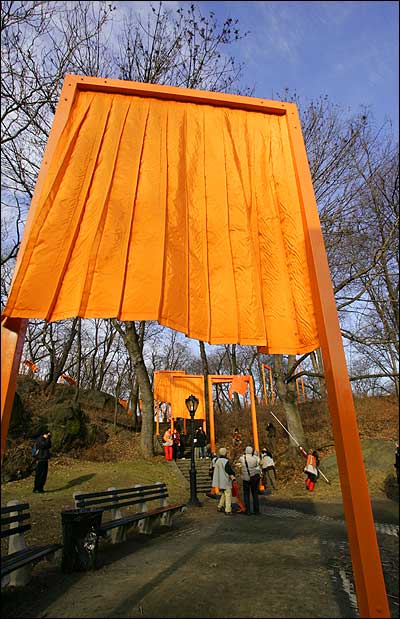 Volunteers unfurled "The Gates" installation throughout New York's Central Park on Sunday. 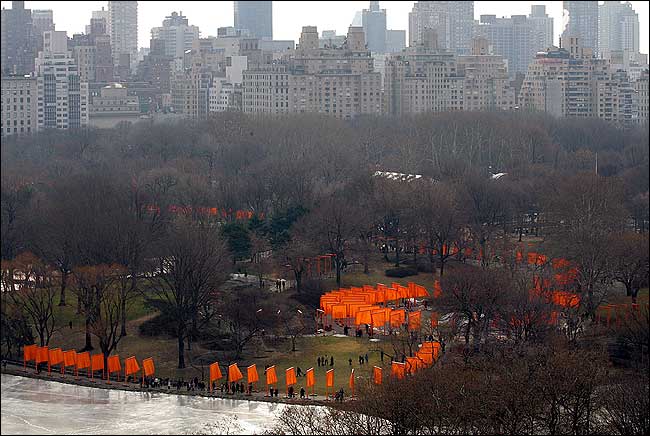 The weather was windy and cold as the first fabric dropped from one of the 7,500 16-foot-high gates, creating what the artists billed as "a visual golden river'' along the park's footpaths. Video: Unveiling 'The Gates' in Central Park The giant $21 million art project "The Gates," which had already filled the park's 23 miles of pathways with thousands of saffron-colored portals, blossomed yesterday at 8:31 a.m., just as the artist Christo and his wife, Jeanne-Claude, had planned. They watched as Mayor Michael R. Bloomberg raised a long metal pole to release fabric from the top of a gate in the Sheep Meadow. Also watching was a crowd that chanted a countdown like the one heard each New Year's Eve in Times Square - "Five! Four! Three! Two! One!"- before the mayor unfurled the fabric on the first gate. Each and every one of the 7,500 gates had the same cocoon of fabric, and after Mr. Bloomberg had unfurled four more, workers (hired and paid by the artists) fanned out through the park to complete the job. By midmorning, the park's circulatory system had taken on the bright color of veins twisting and twirling against the gray-and-brown backdrop of midwinter. The pleated nylon fabric pulsed and swayed at the whim of a 12-mile-an-hour wind - not strong enough to make it snap like a spinnaker on an America's Cup challenger. The color was almost as fiery and fierce as the sun that had risen a couple of hours earlier. "Look at the light," Christo said. "Look, look." In the crowd, people tried to do exactly that. People who had tried to imagine what the completed project would look like finally had a glimpse. Some described them as too-short window shades dangling in the breeze. Some mentioned squarish out-of-season butterflies. Some were intrigued by the play of light on the fabric: as the peekaboo sun came and went, the nylon had a touchable texture one minute and a one-dimensional look the next. Some echoed what Christo and Jeanne-Claude had said about a river of bright color against twigs and leafless branches. Some talked about exhilaration and exuberance. Some were more literal. "A pleated skirt," said Kathleen Catapano of Brooklyn. She looked again, and another idea came to mind: "I think it looks like Jeanne-Claude's hair." Jeanne-Claude has said that her hair, which is redder than the gates, was not what prompted them to choose the color. But they consider the public spectacle of their installations a part of the works themselves. And the preparation for yesterday's event had been a spectacle of its own. It began with workers laying the bases for the gates and people talking about how the bases - dark gray, rectangular and squat - looked like something out of a step class. That gave way to the idea of a barn-raising as each gate was fitted together and lifted in place. "It was like watching an egg hatching slowly," said Olufunmibi Awoshiley, a hospital administrator, "and I didn't know what it was going to look like. Now I see it, and it's beautiful." The unfurling was a payoff of patience and persistence. In 1981, after the city rejected his original proposal on the ground that it would damage the park's landscape and set a dangerous precedent, Christo made clear that he would not give up. "I am in good health," he declared at the time. "The park is still there, and I will do that project." Never mind that the Parks Department had issued a 107-page put-down that said Christo's installation would be "in the wrong place and the wrong time and in the wrong scale." The crowds it would draw, seen by the current generation of city officials as a plus, were considered a negative then. The document also complained that approval would be "inconsistent" with Parks Department permit policies, setting a precedent that could force officials to go along with other large-scale installations. Christo and Jeanne-Claude spent the 1980's and 1990's wrapping the Pont Neuf in Paris with fabric and rope; planting blue umbrellas over a 12-mile-long valley in Japan and yellow ones over a 24-mile valley in California; and wrapping the Reichstag in Berlin with 1.076 million square feet of silvery fabric and bright blue rope. What a difference a couple of decades can make. The city gave the go-ahead in 2003 for a project that was both slimmer and taller than originally planned. There are 7,500 gates instead of 11,000 to 15,000, as Christo and Jeanne-Claude had first envisioned. But each gate is 16 feet high, a foot taller than originally proposed. Instead of steel poles, as first proposed, the frames of the gates are square. The fabric is no longer attached like shower curtains but connected directly to the frames. And while the first plans called for drilling 15,000 holes in the park to anchor the gates, the final design has the sturdy bases, which rest on the ground. It is all temporary. Once the gates are dismantled at the end of the month, there will be no sign that they were there - no holes in the ground, no missing limbs from trees that were trimmed to make room for them. In places where a gate might have brushed against a branch or a limb, the tree won. The gate was moved, but only a bit. The artists have said that there is no best place from which to view the installation, in their words "a celebration of the processional, ceremonial walkways of the park." They said they had envisioned the fabric as "a golden ceiling creating warm shadows" within the park, and "a golden river appearing and disappearing through the bare branches of the trees" from above. They also said, on their Web site (christojeanneclaude.net), that "there are no official opening events." But the moment with the mayor, who had been a supporter of the project in private life, came close. As soon as it was over, Christo and Jeanne-Claude climbed into a $300,000 limousine and went on an inspection tour. They left behind a crowd as concerned with views and angles as they were. The fans realized, as the gates were going up, that the project would have a decidedly different effect from ground level than from a nearby apartment or a helicopter. The fans also realized that "The Gates" had a limited life cycle - 16 days from yesterday's unfurling. So, like Karen Castellano of Los Angeles, they had made their travel plans. "They look like - I don't know, the prettiest curtains I've ever seen," she said as one gate after another opened in the breeze. Yvonne Woetzel, a painter from Dusseldorf, Germany, said that she would not have missed the project. "It's impressive," she said. "It touches people. And it makes people happy. And to see the fabric moving - it's so impressive." George McElroy of Manhattan, who runs a financial services company, marveled at the logistics and the statistics. It took 165,000 bolts and an equal number of self-locking nuts to hold the gates together. Christo's Web site said there were 46 miles of hems in the fabric. And the length? "It's 23 miles," he said of "The Gates." "That's what a marathon is." Some fans said "The Gates" had been an endurance run for Christo and Jeanne-Claude. The project's official title, "The Gates, Central Park, New York, 1979-2005," acknowledges the time it took from brainstorm to unfurling. "They waited so long," said Juliana C. Nash, a public relations researcher. "It's almost like Camilla and Charles." Yesterday, Jeanne-Claude had a one word description for her reaction to the completed installation: "Ecstatic." But everybody is a critic. Consider the assessment of Vinnie D'Angelo, an artist: "The chunky gate shape, the bright colors - it seems like a 70's aesthetic." His friend Seth Bomse, a film editor, said he found the initial unfurling lacking. "It was kind of disappointing close up," he said, "but I like it from a distance." Ann Farmer, Colin Moynihan and Stephanie Rosenbloom contributed reporting for this article. Copyright 2005 The New York Times Company |
|||||||||||||||||||||||||||||||||||||||||||||||||||||||||||||||||||||||||||||||||||||||||||||||||||||||||||||||||||||||||||||||||||||||||||||||||||||||||||||||||||||||||||||||||||||||||||||||||||||||||||||||||||||||||||||||||||||||||||||||||||||||||||||||||||||||||||||||||||||||||||||||||||||||||||||||||||||||||||||||||||||||||||||||||||||||||||||||||||||||||||||||||||||||||||||||||||||||||||||||||||||||||||||||||||||||||||||||||||||||||||||||||||||||||||||||||||||||||||||||||||||||||||||||||||||||||||||||||||||||||||||||||||||||||||||||||||||||||||||||||||||||||||||||||||||||||||||||||||||||||||||||||||||||||||||||||||||||||||||||||||||||||||||||||||||||||||||||||||||||||||||||||||||||||||||||||||||||||||||||||||||||||||||||||||||||||||||||||||||||||||||||||||||||||||||||||||||||||||||||||||||||||||||||||||||||||||||||||||||||||||||||||||||||||||||||||||||||||||||||||||||||||||||||||||||||||||||||||||||||||||||||||||||||||||||||||||||||||||||||||||||||||||||||||||||||||||||||||||||||
|
February 12, 2005
'The Gates' Unfurling to High Hopes By RANDY KENNEDY With 45 television cameras in front of him and a view of bright orange vinyl gates stretching through Central Park behind him, Mayor Michael R. Bloomberg said yesterday that the city expected an infusion of $80 million in tourism and other spending by people flocking to see "The Gates," the vast public art project by the artists Christo and Jeanne-Claude. Worldwide interest in the project was clear at the news conference at the Metropolitan Museum of Art, where journalists from more than 200 media outlets, including networks in Sweden, Mexico City and Tokyo and others as unusual as Bulgarian national television, crowded into the Temple of Dendur to hear the mayor and the two artists discuss the project, whose saffron-colored fabric panels will be unfurled this morning. For Mr. Bloomberg - who has reduced the city's arts budget amid general cutbacks but has also emerged as the strongest promoter of public art at City Hall in decades - the event was a chance to bask in the glow of a near-perfect blockbuster project: one that comes at no cost to the city (the artists are paying for everything, including extra police officers) and that will attract thousands of art pilgrims to New York during a month when tourism is traditionally at its lowest. "With no ticket sales of any kind it's impossible to predict exactly how big an impact 'The Gates' will have during its 16-day stay here," Mr. Bloomberg said, "but based on attendance at similar events and other factors, the city's Economic Development Corporation estimates that the project will generate more than $80 million in economic activity for our city." The $20 million project was originally conceived by the artists in 1979 and was rejected by three mayoral administrations before Mr. Bloomberg's, in part because of concerns about its cost and about damage to the park. The mayor, who first became interested in the notion of "The Gates" in 1995 as a trustee of the Central Park Conservancy, made light of the project's long history yesterday, saying that it took Michelangelo four years to paint the ceiling of the Sistine Chapel and Beethoven five years to write the Ninth Symphony. "Mere blinks of an eye," he said, "compared to the time that it took to build the masterpiece that we are celebrating today." "I can't promise," he added, "particularly since this is New York, that every single person will love 'The Gates,' but I guarantee that they will all talk about it." "And that's really what innovative, provocative art is supposed to do," he added, as Jeanne-Claude and Christo sat next to him. Vince Davenport, the project's engineer, said that teams of workers would be standing by in case any of the 16-foot-high gates broke or were pushed down, and that a gate could be replaced in less than an hour. But both he and Raymond W. Kelly, the police commissioner, said they did not anticipate many problems, from either vandals or the weather. Mr. Davenport said that teams would begin manually unfurling the fabric at 8:30 a.m. and that all of the panels should be released by about 11. Asked often yesterday to explain the meaning of the project, Christo and Jeanne-Claude emphasized that its meaning would have to be found by those who walked through the 7,500 gates, spread over 23 miles of walkways. "It has no purpose," Jeanne-Claude said. "It is not a symbol. It is not a message. It is only a work of art." But Christo explained that it related in some ways to the unrealized plans of Frederick Law Olmsted and Calvert Vaux, the park's designers, to place iron gates at many of the entrances to the park. He added that the fabric panels, which will blow and curve in the wind, are also meant to remind viewers of the park's serpentine paths and the curves of the empty branches of the trees above them. After answering several questions, however, Christo became clearly frustrated by trying to explain his work and emphatically urged experience over rational inquiry. "This project is not involved with talk," he said. "It is real physical space. You need to spend time walking in the cold air - sunny day, rainy day, even snow. It is not necessary to talk." EDITORIAL NOTEBOOK At Last, the Gates Wave in Central Park By CAROLYN CURIEL Few artists can make a global splash like Christo and Jeanne-Claude, who are spouses and collaborators. Their public art creations are not so much displayed as audaciously imposed: installations that employ landscapes and buildings as mannequins and pincushions. They put pink skirts on islands off Florida, silver draping around the Reichstag in Berlin and colorful umbrellas in fields in Southern California and Japan. As a successor to these phenomena, "The Gates," which unfurls today in Central Park, adds another dimension, a certain humanity within the grandeur. The artists' earlier inventions were often remote, away from urban areas or other easily accessible settings. The splendor depended on what photographs or aerial video could capture. Not so with "The Gates." For 16 days, "The Gates" will be in place, with 7,500 saffron-colored panels hanging above pedestrians like slices of sunlight. Streaming along 23 miles of walkways in Central Park - the most-visited park in the nation's largest city - the installation invites interaction and exploration. The artists have said the saffron color of the fabric and frames was chosen simply because they like it, but it seems a prompt for meditation and reflection. Still, visitors shouldn't expect a lot of peace and quiet. New Yorkers and tourists are expected to crowd the park, an unusual circumstance in the month of February. As with their previous 18 large works, Christo and Jeanne-Claude financed the full cost, some $20 million. They also paid with time and perseverance. It took a quarter-century to realize their vision, which finally won approval after the election of Mayor Michael Bloomberg. Only in the last few weeks did the scope of the project become clear, with the frames springing up as if ready for a giant round of croquet. On one recent day, crew members hoisted poles into place and took in early reviews from passers-by. One called it an abomination, but others seemed more enthralled. One woman, who described herself as a landscape painter, called the work in progress "an environmental happening." Another woman, on skates and carrying a Bergdorf Goodman bag, tried unsuccessfully to volunteer to help on the spot. In the dead of winter, when sensations can go as numb as uncovered ears, Christo and Jeanne-Claude and their legions of helpers are at the very least succeeding in awakening sentiments. Critics can argue that Central Park does not need the fuss. But maybe New Yorkers do, in the form of this bright respite. Copyright 2005 The New York Times Company |
|||||||||||||||||||||||||||||||||||||||||||||||||||||||||||||||||||||||||||||||||||||||||||||||||||||||||||||||||||||||||||||||||||||||||||||||||||||||||||||||||||||||||||||||||||||||||||||||||||||||||||||||||||||||||||||||||||||||||||||||||||||||||||||||||||||||||||||||||||||||||||||||||||||||||||||||||||||||||||||||||||||||||||||||||||||||||||||||||||||||||||||||||||||||||||||||||||||||||||||||||||||||||||||||||||||||||||||||||||||||||||||||||||||||||||||||||||||||||||||||||||||||||||||||||||||||||||||||||||||||||||||||||||||||||||||||||||||||||||||||||||||||||||||||||||||||||||||||||||||||||||||||||||||||||||||||||||||||||||||||||||||||||||||||||||||||||||||||||||||||||||||||||||||||||||||||||||||||||||||||||||||||||||||||||||||||||||||||||||||||||||||||||||||||||||||||||||||||||||||||||||||||||||||||||||||||||||||||||||||||||||||||||||||||||||||||||||||||||||||||||||||||||||||||||||||||||||||||||||||||||||||||||||||||||||||||||||||||||||||||||||||||||||||||||||||||||||||||||||||||
|
February 11, 2005 Above the Park, When 'The Gates' Open By JAMES BARRON Suddenly, New Yorkers with friends in high places are wondering: Are their friends in the right high places, that is, overlooking Central Park? And when is their party? "The Gates," a $20 million art project by the artist Christo and his wife, Jeanne-Claude, opens tomorrow in Central Park, and it promises to be a social event, not just an artistic one. "Everybody I know who lives around the park is doing parties for 'The Gates,' said Annaliese Soros, who is planning two parties in her apartment on Central Park West. "The Christo events are happenings, and they attract a lot of enthusiasm. They attract a lot of people. They do something very special and very different. Berlin had five million tourists when he draped the Reichstag. We won't have that many here." She meant in the city, not in her apartment. But some party-givers say the crowd they are expecting is bigger than they had originally planned. The guest list grew as friends called, and friends of friends and friends of friends of friends. The 7,500 gates in the project have been installed throughout this week. Tomorrow morning, fabric will be unfurled from atop them. The project will be on view for 16 days. Donna Rosen, who lives on the 43rd floor of a building a couple of blocks south of Mrs. Soros's, recalled her conversations with her caterer, Gretchen Aquanita, as they planned an open house in Mrs. Rosen's apartment. "I said, 'I think 75,' " Mrs. Rosen said. "Then I called again, 'I think we might be over 100.' Then I called, '200.' She said, 'Ahhgggh.' " As the gates were being set in place beneath Mrs. Rosen's floor-to-ceiling windows on Wednesday, the count was up to 240, and she was talking about Ms. Aquanita's plans for a menu to match the orange color of the fabric-covered gates on the park's pedestrian paths. "She said, 'Shall we use saffron?' " Mrs. Rosen recalled. "I said, 'Of course.' " Ms. Aquanita began planning shrimp and saffron salad. Gail May Engelberg, who has invited friends to her apartment on Fifth Avenue, remembered chatting with Christo a couple of years ago at an event for the Guggenheim Museum. "I said, 'How's the project coming?' " she recalled. "I wanted to host my friends and be able for them to have a look down on 'The Gates' whether there is snow or ice or sunny blue skies." For some, just looking out the window was not enough to make sure they had a clear view. "I walked over to the park to make sure that I could see the two windows of my apartment," said Rosamond Ivey, a trustee of the Art Gallery of Ontario, who is giving a "Gates" cocktail party in her apartment on East 79th Street between Madison Avenue and Park Avenue late next week. Her guests will have drinks at her apartment after inspecting "The Gates" on a walk through the park. Then they will go to the Metropolitan Museum of Art for dinner, where David Moos, the curator of contemporary art at the Ontario museum, will be joined by Jonathan Feinberg, an art historian who wrote a monograph on "The Gates." Mr. Moos, whose museum has a Christo exhibition on display, said he is looking forward to seeing "The Gates" from ground level and from Ms. Ivey's apartment. "If you think of Central Park as the great democratic American space, Jeffersonian, Whitmanic, in the heart of the metropolis, it is interesting to contemplate who has access to the aerial view," he said. "It puts into relief this political dimension." And then there are the corporate parties. Budget Living magazine, for example, sent invitations for a breakfast-lunch-or-midday-break party that will begin at 8:30 a.m. Tuesday in a 24th-floor apartment with Oscar de la Renta furniture and 10 Christo images on the walls. "It's more like a moving cocktail party all day, until it gets dark," said Donald E. Welsh, the magazine's founder. And no, it will not break Budget Living's budget: the apartment, the furniture and the Christos are all borrowed. Mrs. Soros, who lives on the ninth floor, will be closer to "The Gates." "It will be like watching the Thanksgiving Day parade," she said. "I can practically touch the floats, and whoever is on the 36th floor cannot. From up there, you get, obviously, an idea. Down here, it's much more real and touchable. Here, you feel you want to go out and walk through the park and just be there." Copyright 2005 The New York Times Company |
|||||||||||||||||||||||||||||||||||||||||||||||||||||||||||||||||||||||||||||||||||||||||||||||||||||||||||||||||||||||||||||||||||||||||||||||||||||||||||||||||||||||||||||||||||||||||||||||||||||||||||||||||||||||||||||||||||||||||||||||||||||||||||||||||||||||||||||||||||||||||||||||||||||||||||||||||||||||||||||||||||||||||||||||||||||||||||||||||||||||||||||||||||||||||||||||||||||||||||||||||||||||||||||||||||||||||||||||||||||||||||||||||||||||||||||||||||||||||||||||||||||||||||||||||||||||||||||||||||||||||||||||||||||||||||||||||||||||||||||||||||||||||||||||||||||||||||||||||||||||||||||||||||||||||||||||||||||||||||||||||||||||||||||||||||||||||||||||||||||||||||||||||||||||||||||||||||||||||||||||||||||||||||||||||||||||||||||||||||||||||||||||||||||||||||||||||||||||||||||||||||||||||||||||||||||||||||||||||||||||||||||||||||||||||||||||||||||||||||||||||||||||||||||||||||||||||||||||||||||||||||||||||||||||||||||||||||||||||||||||||||||||||||||||||||||||||||||||||||||||
|
February 11, 2005
Art in the Park Calls for More Than Velvet Ropes By JENNIFER 8. LEE It is one thing to guard a Fabergé egg or the Mona Lisa. Any experienced security expert can list the basic tactics: velvet ropes, glass display cases and infrared beams. But how to protect art made up of 7,500 gates sprawled over 23 miles of trail in an 843-acre park whose entrances are never fully closed, even at night? The problem with protecting public art is, well, it's public. The usual safeguards are of little use when the artists envision visitors walking through their creation, a luminous river of saffron fabric in Central Park. "To cordon this off would be detrimental to the aesthetic of the display," said Chris Grniet, a vice president at Kroll, the security company. So "The Gates, Central Park, New York City, 1979-2005," by the husband and wife team of Christo and Jeanne-Claude, has prompted one of the largest efforts by the New York Police Department to protect a single installation of art - proportional to the attention-grabbing nature of the exhibit, which is expected to draw at least 200,000 tourists to New York when it opens tomorrow for a 16-day run. The department is dispatching helicopters that broadcast live aerial feeds, building a 24-hour command center in the Loeb Boathouse at the park and adding several hundred police officers to the park's 125-person police force. There will be 20 officers on horseback and 43 on scooter patrol. In addition, the artists have hired a 36-person private security team to maintain round-the-clock surveillance. Raymond W. Kelly, the police commissioner, said the artists would reimburse the city for any costs it incurs, including the increased security. The department has also set up an 87-officer detail to translate in five foreign languages: French, Italian, German, Japanese and Chinese. And it has published a guide to the exhibit. Officials say the exhibit was designed to be durable. "The nature of the installation makes it very hard to vandalize," said Adrian Benepe, the New York City parks commissioner. But public art has always been a target for vandalism, especially the popular animal statues that many cities have commissioned over the last several years. In July, a 250-pound panda statue, along with its 650-pound concrete base, was stolen from a busy street corner in Washington, baffling the police. The body turned up five months later - dumped in a creek 20 miles away. Copyright 2005 The New York Times Company |
|||||||||||||||||||||||||||||||||||||||||||||||||||||||||||||||||||||||||||||||||||||||||||||||||||||||||||||||||||||||||||||||||||||||||||||||||||||||||||||||||||||||||||||||||||||||||||||||||||||||||||||||||||||||||||||||||||||||||||||||||||||||||||||||||||||||||||||||||||||||||||||||||||||||||||||||||||||||||||||||||||||||||||||||||||||||||||||||||||||||||||||||||||||||||||||||||||||||||||||||||||||||||||||||||||||||||||||||||||||||||||||||||||||||||||||||||||||||||||||||||||||||||||||||||||||||||||||||||||||||||||||||||||||||||||||||||||||||||||||||||||||||||||||||||||||||||||||||||||||||||||||||||||||||||||||||||||||||||||||||||||||||||||||||||||||||||||||||||||||||||||||||||||||||||||||||||||||||||||||||||||||||||||||||||||||||||||||||||||||||||||||||||||||||||||||||||||||||||||||||||||||||||||||||||||||||||||||||||||||||||||||||||||||||||||||||||||||||||||||||||||||||||||||||||||||||||||||||||||||||||||||||||||||||||||||||||||||||||||||||||||||||||||||||||||||||||||||||||||||||
|
February 10, 2005
Central Park Makeover: Reality Show, in a Way By CAROL VOGEL Slide Show: It's a Wrap Video: Work Begins on "The Gates" At 6:45 a.m. on Tuesday, as the sun was beginning to rise over Central Park, the Loeb Boathouse was buzzing. The artist Christo stood outside, admiring the way the soft morning light bathed the orange gates that teams of workers had put into place on Monday. It was Day Two of installing his vast $20 million public art project, created with his wife, Jeanne-Claude, and there was a sense that there was no time to lose. So far, 261 16-foot-tall gates had sprouted around the park. By tomorrow evening, 7,500 will have to be in place along the park's pedestrian walkways from 59th Street to 110th Street, in time for the saffron-colored fabric that adorns the gates to be unfurled around 8:30 on Saturday morning. (The project will remain through Feb. 27.) Inside the boathouse, the 600-odd paid volunteers enlisted for the five-day job were chatting over coffee and rolls, waiting to head off to their assigned areas. Things had gotten off to a slow start on Monday. It had taken time for the workers to assemble, find their work areas and figure out the most efficient way to work. Still, every team seemed competitively conscious of its accomplishments. "We installed 27 gates yesterday," boasted Ann W. Richards, the former governor from Texas. "There's something magical about people coming together for a common purpose without something for them to gain," she added. "I'm having a ball." "There's real energy," agreed Antoine Douaihy, who oversees 150 people in 14 teams as the leader of Area One - extending from 59th Street to 65th Street and from Fifth Avenue to Central Park West - and in real life works in film production. "One team refused to stop until they had put up 25 gates." Also savoring the scene was Anne L. Strauss, a curator at the Metropolitan Museum of Art who organized an exhibition of Christo and Jeanne-Claude's "Gates"-related drawings, collages, photographs and maps last year. "There are a lot of art people here," she said. While each team seemed diverse in age and profession, from college students to retired teachers and doctors, all had a common bond: a resolve to be a part of the city's biggest public-art happening ever. By 7:30 a.m., after a pep talk from Vince Davenport, the project's chief engineer and construction director, and from Capt. Andrew Capul, commanding officer of the Central Park Precinct, everyone headed off to their assigned areas. Although Mr. Douaihy called the 261 gates installed on Monday a "respectable" figure, he said that 400 to 500 more would have to go up Tuesday if the effort was to be completed by Friday. Cruising around the park in a golf cart, he consulted with Guy Efrat, one of the area's so-called "zone supervisors." (Each area is divided into zones, and each zone into teams.) Mr. Efrat, who also works in movie production, was overseeing three teams in Mr. Douaihy's area. Like mutual strangers in a reality television show, each team felt somewhat randomly thrown together. But often, the common strand was art: Area One, Section 10, for instance, was made up of a performance artist, an advertising art director, a retired doctor/Yale University professor, a sculptor/gilder, an architect, an architectural draftsman, a freelance stagehand and a recent college graduate who is on his way to become an intern at the Chinati Foundation, a contemporary-art organization in Marfa, Tex. "I've never seen so many artsy people in my life," said Huascar Pimentel, the stagehand, who is one of the professional workers that was assigned to the team. "These guys are great - they don't mind getting their hands dirty." Nor did the men mind taking directions from a woman, although some of them joked about it. ("You don't see this much cooperation in the workplace," said Robert Steigelman, the advertising art director.) Catherine Courter, the sculptor and gilder, had been named the team's captain by the organizers. Michael Bianco, the recent graduate, and Arvin Garay-Cruz, the architect, had been asked to be the "levelers," the team members who made sure that the steel plates anchoring the poles in heavy bases were installed correctly. Each worker had attended a four-hour training session last week where the professionals took notes on those who demonstrated leadership ability (potential team captains) or mechanical ability (levelers). It took only about three minutes for the workers to actually hoist a gate into place. The hard part was using the right size horizontal poles (which depended on the width of walkways) and wielding nuts, bolts and wrenches to attach parts like the orange boxlike sleeves that conceal the metal plates. And some spots were more difficult than others. On heavily trafficked paths, installers often had to stop working to let pedestrians pass. Hilly or narrow paths were harder to work on. And then there was the saccharine music emanating nonstop from the ice rink. And the remarks of passersby. "I can't work it out - it horrifies me that this is costing $20 million, I don't care who's paying for it," a man carrying a briefcase said as he hurried past the workers of Area One, Section 10, on West 59th Street behind the Wollman Skating Rink. Still, most people who stopped to chat had positive reactions. "I'm not sure about the color, but I'm a fan," Douglas F. Eaton, a United States District Court judge, said after his daily round of skating. On Monday the team members installed only 18 gates. But by 10:15 on Tuesday morning they were already putting up the 11th of the day. The key was establishing a rhythm: one person repeatedly readied the equipment for the levelers, and the levelers would begin their task as others trundled the gates over to their assigned positions. "This is my cheap and cheerful vacation," Robert Condon, the architectural draftsman, said, holding a pole in position. By noon the team headed back to the boathouse for lunch, leaving Mr. Pimentel behind to watch the equipment. (That job rotates among teammates each day.) "Can you believe it, this was conceived the year I was born?" Mr. Cruz, 26, said as the group ambled toward the boathouse. (Christo and Jeanne-Claude have been working on "The Gates" since 1979.) "If you look at one gate, it's ugly, it looks like a guillotine," he mused. "It's the multiplicity of them that makes it a total artwork." "The more go up, the cooler it looks," Ms. Courter agreed over lunch in the packed boathouse. Team members sat together, chatting happily while keeping a wary ear open to find out how many gates the other teams had installed. Then it was back to their assigned area near the rink. By 4 p.m., Area One, Section 10, had managed to install a total of 35 gates. Exhausted, the team members returned their supplies to a nearby staging area and began planning for Wednesday. After ticking off the completed gates on a map, Ms. Courter started counting those that would have to be installed on Wednesday. "Thirty-five again tomorrow," she said. "No problem." Copyright 2005 The New York Times Company
|
|||||||||||||||||||||||||||||||||||||||||||||||||||||||||||||||||||||||||||||||||||||||||||||||||||||||||||||||||||||||||||||||||||||||||||||||||||||||||||||||||||||||||||||||||||||||||||||||||||||||||||||||||||||||||||||||||||||||||||||||||||||||||||||||||||||||||||||||||||||||||||||||||||||||||||||||||||||||||||||||||||||||||||||||||||||||||||||||||||||||||||||||||||||||||||||||||||||||||||||||||||||||||||||||||||||||||||||||||||||||||||||||||||||||||||||||||||||||||||||||||||||||||||||||||||||||||||||||||||||||||||||||||||||||||||||||||||||||||||||||||||||||||||||||||||||||||||||||||||||||||||||||||||||||||||||||||||||||||||||||||||||||||||||||||||||||||||||||||||||||||||||||||||||||||||||||||||||||||||||||||||||||||||||||||||||||||||||||||||||||||||||||||||||||||||||||||||||||||||||||||||||||||||||||||||||||||||||||||||||||||||||||||||||||||||||||||||||||||||||||||||||||||||||||||||||||||||||||||||||||||||||||||||||||||||||||||||||||||||||||||||||||||||||||||||||||||||||||||||||||
|
11-Jan-2005 New York Art Project Made in Germany Ever since they shrouded Berlin's Reichstag, most Germans know artist duo Christo and Jeanne-Claude. Germany plays a role in their latest work in New York too, this time weaving and stitching their trademark fabric. A decade ago, Christo and Jeanne-Claude created a sensation when they swaddled the German Reichstag or parliament building in shimmering silver fabric for two weeks in a statement of Berlin's Cold War east-west political divide. As the artist duo prepare for their latest art installation in New York -- setting up 7,500 gates hung with panels of saffron-colored fabric in Central Park -- Germany is once again involved. Few know that much of the handiwork for "The Gates," as the New York art installation is called, was done across the Atlantic in small workshops in sleepy German towns. And, as if in a continuing vein of the artists' Reichstag project, Germany's once divided halves are in it together: a manufacturing company in Taucha near Leipzig in eastern Germany and a weaving mill in the town of Emsdette, near Münster in western Germany, have labored separately to ensure that "The Gates" opens as scheduled on Feb. 12. Both companies have worked for the Bulgarian-born Christo and his French wife and co-artist Jeanne-Claude before. There's little doubt that the high-profile New York project is a further feather in their cap. Klaus Schirmer, head of production at the Schilden company, which wove the sturdy sheets of polyamide imprinted with an intricate honeycomb design in saffron yellow for "The Gates," said it wasn't a routine commission. "It is definitely special. It's probably not everyday that one can associate art with a technical weaving mill. Thus this whole Christo thing is really special and of course very, very important to us," Schirmer told Deutsche Welle during the manufacturing stage last year. Christo reportedly paid the weaving mill around €400,000 ($524,000) for 100,000 square meters of polyamide textile, the normal price according to the company. For the tiny sewing workshop in Taucha, which belonged to the Communist East German government and has now been bought over by the Swiss Bieri Group, the Christo commission brought welcome relief to its workers. "It's a nice change," Susann Reihe, who has been stitching together the fabric panels for Christo and Jeanne-Claude's New York artwork for the past year in Taucha, told German broadcaster WDR. "We normally do protective weather-proof covers for cars, party-tents and the like, that demands a whole lot of painstaking work," Reihe said. "This is really lovely in contrast." Christo's project manager Wolfgang Volz said that the Taucha-based Bieri Zeltaplan company had already proven its skills and quality during the Reichstag wrapping project. "At the time we had a really good experience with them," Volz told WDR. "That's why we approached them again." Roland Eilenberger, head of Bieri Zeltaplan is clear that the commission has also brought the company much prestige in their line of work. "Naturally, you can't market such a project in the same way that you would perhaps bring out a luxurious product on the market," Eilenberger said. "But, overall, in the textile industry it's pretty unique to able to work and complete such a mammoth project." The company shipped off the last of the fabric panels to New York last November. "The Gates" is just the latest in a string of gigantic public art pieces that the conceptual artists are known for, most of which have involved wrapping swathes of fabric around massive objects. Among their more memorable projects, was a hanging of a curtain between two peaks in a Colorado valley, wrapping the Pont Neuf in Paris, embellishing several islands off Florida with tutus, the wrapping of the Reichstag and opening 3,100 umbrellas in Japan and California. "The Gates," which like most of the artist duo's works is monumental but temporary, will consist of five-meter-high gates placed at intervals of about 3.5 meters along 37 kilometers of footpaths throughout New York's Central Park. The saffron-colored fabric panels will be suspended from each gate, falling to two meters above the ground. The installation is designed to pay tribute to the park's half-planned topography as well as to evoke the structure of the surrounding city blocks. As with most of Christo and Jeanne-Claude's projects, the fabric is central to the installation. This time the saffron color is meant to symbolize a park in full bloom. Author DW staff (sp) http://www.dw-world.de/ © Deutsche Welle |
|||||||||||||||||||||||||||||||||||||||||||||||||||||||||||||||||||||||||||||||||||||||||||||||||||||||||||||||||||||||||||||||||||||||||||||||||||||||||||||||||||||||||||||||||||||||||||||||||||||||||||||||||||||||||||||||||||||||||||||||||||||||||||||||||||||||||||||||||||||||||||||||||||||||||||||||||||||||||||||||||||||||||||||||||||||||||||||||||||||||||||||||||||||||||||||||||||||||||||||||||||||||||||||||||||||||||||||||||||||||||||||||||||||||||||||||||||||||||||||||||||||||||||||||||||||||||||||||||||||||||||||||||||||||||||||||||||||||||||||||||||||||||||||||||||||||||||||||||||||||||||||||||||||||||||||||||||||||||||||||||||||||||||||||||||||||||||||||||||||||||||||||||||||||||||||||||||||||||||||||||||||||||||||||||||||||||||||||||||||||||||||||||||||||||||||||||||||||||||||||||||||||||||||||||||||||||||||||||||||||||||||||||||||||||||||||||||||||||||||||||||||||||||||||||||||||||||||||||||||||||||||||||||||||||||||||||||||||||||||||||||||||||||||||||||||||||||||||||||||||
|
New York Daily News -
http://www.nydailynews.com/
Open shutter on 'Gates' Monday, January 17th, 2005 It took 26 years for landscape artist Christo and his wife, Jeanne-Claude, to get permission to erect their "Gates" project in Central Park. Legendary documentary film maker Albert Maysles caught the process on tape. About 100 hours of it, anyway. And although Christo's 7,500 tubular gates with saffron-colored fabric panels will decorate 23 miles of pathways in the park for a mere 15 days, Feb. 12-27, Maysles, 71, and directing partner Antonio Ferrera, 28, promise a film for the ages. They also pledge to make a distinctly New York film, starring Central Park and what Maysles calls "the collage" of people around it. "Central Park is sort of this egalitarian place, this Arcadia, where all of New York comes together to play and do their thing," Ferrera said. "'The Gates'" sort of underlines that." Maysles and his late brother, David, used hand-held cameras and sound equipment to revolutionize documentaries with films like "The Beatles: First U.S. Visit" and "Gimme Shelter," their 1974 film about the Rolling Stones tour that culminates in the disastrous California concert at Altamont. The brothers caught on film a Hells Angels member, hired to provide security, killing a fan who tried to rush the stage. Maysles has one of the cameras used at Altamont in his home at the Dakota on Central Park West. Maysles and the Christos have a long history together - "The Gates" will be the sixth documentary Maysles has done with them since he and his brother met the pair in Paris in 1962. The collaboration has worked because their methods are the same, a sort of Zen acceptance that whatever happens, happens and becomes a part of the artistic process. "In a good documentary, you never know what will happen next. Half or more of the Christos' projects is the unknown reaction to it," Maysles said. "They don't know what the weather is going to be. That's okay. Maybe it will snow. Maybe a rainbow crosses the park at that time. So much the better." The city's reluctance to approve the "Gates" project added a bit of cinéma vérité to the film. Because they have film spanning each of the Christos' requests and city rejections since the artists' first attempt in 1979, the audience gets to watch various officials, and the Christos, age on film. "So the viewer gets to watch these evolutions of the project and the people involved," Ferrara said. "People go from being young people in the '70s to who they are today. One guy who was against it has hair in the '70s. Now he's bald." "So many people think of interviews in documentaries, but what is important is that person you are filming experiencing something," Maysles said. "You are experiencing things those people experience." The Christos modified their proposal over the years to win city approval. For instance, they abandoned the idea of drilling holes to anchor each gate in the pathway and instead constructed portable stands for each. And the couple's success over the years with their massive works - they covered the Reichstag in Germany in silver fabric and strung yellow umbrellas across the California countryside, for example - made the Central Park project more palatable to local officials. Maysles said he is also proud that this is a film without a point. "At our best, we are making a film that has no particular purpose," he said. "You talk to the Christos, they say there is no purpose to their art, just a thing of beauty to be enjoyed. So is this film. When you think about it, Shakespeare, what is the purpose?" The documentary crew spends hours a day filming all aspects of "The Gates" assembly and construction. The filmmakers expect to winnow the estimated 100 hours of videotape to a 90-minute film. Then there is the money. Unlike the Christos, who pay for all of their projects by selling the equivalent of storyboard sketches of each - Maysles has two of them - the filmmaker is still raising the estimated $80,000 he will need to complete the documentary.
|
|||||||||||||||||||||||||||||||||||||||||||||||||||||||||||||||||||||||||||||||||||||||||||||||||||||||||||||||||||||||||||||||||||||||||||||||||||||||||||||||||||||||||||||||||||||||||||||||||||||||||||||||||||||||||||||||||||||||||||||||||||||||||||||||||||||||||||||||||||||||||||||||||||||||||||||||||||||||||||||||||||||||||||||||||||||||||||||||||||||||||||||||||||||||||||||||||||||||||||||||||||||||||||||||||||||||||||||||||||||||||||||||||||||||||||||||||||||||||||||||||||||||||||||||||||||||||||||||||||||||||||||||||||||||||||||||||||||||||||||||||||||||||||||||||||||||||||||||||||||||||||||||||||||||||||||||||||||||||||||||||||||||||||||||||||||||||||||||||||||||||||||||||||||||||||||||||||||||||||||||||||||||||||||||||||||||||||||||||||||||||||||||||||||||||||||||||||||||||||||||||||||||||||||||||||||||||||||||||||||||||||||||||||||||||||||||||||||||||||||||||||||||||||||||||||||||||||||||||||||||||||||||||||||||||||||||||||||||||||||||||||||||||||||||||||||||||||||||||||||||
|
February 8, 2005
A Filmmaker's 50 Years of Reassuring Intimacy By KATHRYN SHATTUCK The scene left a lot to the imagination. On a sun-drenched day last week in Central Park, the only evidence of "The Gates," New York City's biggest public art project ever, was several thousand dark steel bases poking through a layer of snow. But for the 78-year-old filmmaker Albert Maysles, whose mission it has been to record a quarter-century of work on the project by the artists Christo and Jeanne-Claude, the site had potential. The saffron-colored panels that will billow across 23 miles of park footpaths will not be unfurled until Saturday, but 11 days in advance, Mr. Maysles knew that people would already be talking about it. "I'd like to find a group already involved in a discussion about the work," he said, alighting from a golf cart at the Great Lawn. A barely perceptible frown clouded the white-haired filmmaker's face, framed by black spectacles. Except for a few pedestrians wandering by, nothing much was happening. Finally, camera in hand, he approached a tattooed woman who was sitting on a bench in a spaghetti-strapped camisole and trousers, her two white dogs the only apparent source of warmth. "Let me feel you," he said after a few minutes of casual conversation, placing his hand on her bare shoulder. "My God, it's warm." He turned to Antonio Ferrera, his co-filmmaker, and motioned him over. "Feel her shoulder," he said. "Do you believe it?" Mr. Ferrera reached out and touched her. It was the Maysles technique - intimate to the point of being unnerving yet somehow, reassuringly safe. Touched by strange men in the middle of Central Park, the woman did not flinch. And so began the first of Mr. Maysles's explorations that afternoon as he and Mr. Ferrera sidled up to bench-sitters, waved at passers-by, basked in recognition and filmed - or not, depending on their subjects' willingness - reactions to The Gates, a project that just about everyone seemed to have an opinion about, once Mr. Maysles had coaxed them into revealing it. A chat with a transplanted Russian couple veered from Mr. Maysles's visit to Russia in 1955, when as a psychology teacher from Boston University he cajoled his way into psychiatric hospitals and recorded what was to become his first film, to the eccentricities of the pianist Vladimir Horowitz, the subject of another of his documentaries, to the Russian man's own work as an artist in Central Park upon his arrival in this country in 1979. "Christo and I are alike," said the man, Eric Freyman. "We both relied on the park to survive." A woman who described herself as "a product of Germany after World War II" and refused to be filmed, was less enthusiastic about the project. "Nature does not need adornment," she said, her brow crinkling. Mr. Maysles sat down, turned off his camera and began to talk. Soon, the conversation moved to Prague, where, the woman said, her Jewish mother had been forced to work in a church during the war. "My family name is well known there, but spelled differently," he said: "Maisels." "Ah, yes, you are Albert Maysles," she replied, her face brightening. "Gimme Shelter." "Salesman." "Grey Gardens." She knew his documentaries well. They talked a bit longer - about her former career as a language teacher, about his continuing one. "Well, I still can't say that I approve of this," she said, finally, gesturing to the base that she was using as a footrest. "But you've convinced me to keep an open mind." Mr. Maysles picked up his camera and walked on. "You know, one experience leads to another," he said, inching closer to his listener until their noses were almost touching. "In the end, 'The Gates' become connectors between lives." Mr. Maysles is well practiced in finding the connections between the environmental art visualized by Christo and Jeanne-Claude and the people who experience it. "The Gates," his sixth project with the couple, is to be shown on HBO in the fall. Tomorrow, the Museum of Modern Art will begin screenings of "Christo and Jeanne-Claude: Projects Recorded, 1969-1998," which includes Mr. Maysles's films of the previous five collaborations. Mr. Maysles met Christo and Jeanne-Claude through a friend in Paris in 1960, and they became like family, Jeanne-Claude said, when the Christos moved to New York in 1964. With his brother and co-filmmaker, David, Mr. Maysles followed the couple as they strung a rippled sheet of orange fabric between mountains in "Christo's Valley Curtain" (1974), stretched an 18-foot wall of white across Northern California in "Running Fence" (1978), skirted Biscayne Bay islands in flamingo pink in "Islands" (1986) and wrapped the Pont Neuf in gold in "Christo in Paris" (1990). He completed "Umbrellas" (1995), about the simultaneous opening of 3,100 umbrellas in California and Japan, without David, who died in 1987. For now, all that exists of "The Gates" documentary is a five-minute trailer and a mass of film taken across more than two decades - and left to editors in Mr. Maysles's studio on West 54th Street to make sense of. "It's a talent I don't have," he said of the editing, noting that a late-in-life diagnosis of attention deficit disorder had helped him better understand what he had always viewed as his weaknesses. "I haven't the eye." But that disability has helped to nurture some strengths. "I am a very, very good listener," he said. "My innate difficulty with concentration forced me to be." A pioneer in direct cinema, the American version of French cinéma vérité, Mr. Maysles is an old-school documentarian, preferring to remain out of frame and let life speak for itself. "When you ask a question," he said, "you already know what the answer will be." And so he has sought out what he doesn't already know. It was Mr. Maysles's team who filmed a man being stabbed to death during a Rolling Stones concert at Altamont in the 1970 film "Gimme Shelter," Mr. Maysles who ferreted out the aspirations and disappointments of a reclusive mother and daughter in their decaying house in East Hampton, on Long Island, in "Grey Gardens" (1976). And it is Mr. Maysles whom the Christos have allowed to accompany them from intimacy to intimacy for more than three decades, from Christo's freak-out session as he watched their Colorado curtain become snagged during its unfurling in 1972 to Jeanne-Claude's singing "Oh, What a Beautiful Day," a bit off-key, in the back of a taxi cab in 2003. "We used to tease David and Al when we were younger because once I remember they said, they want to be with us all the time, everywhere," Jeanne-Claude said in a telephone interview from her downtown loft last week. "But they have not yet caught us brushing our teeth." "It's not only about the films of Christo," she continued. "You will see that in all of their film, David and Albert, always, they just can't help it - no matter what is happening, they cannot help but throw in a little a bit of tenderness." David was mostly the sound, she recalled, and Albert the cameraman. David's role on "The Gates" has fallen to Mr. Ferrera, a 35-year-old writer and filmmaker with a fondness for quoting Thomas Hardy whose romantic vision seems to mesh with Mr. Maysles's own. For "The Gates," the men have been camped out "like nomads," Mr. Ferrera said, coming and going until late into the night from their trailer next to the Central Park Boathouse, just across the park from Mr. Maysles's apartment in the Dakota. Inside, young assistants tap away on laptops and answer phones, maintaining filming and interview schedules, keeping Mr. Maysles sated with miniature chocolate bars and, given that it is in 50th year in filmmaking, monitoring the recent run on lifetime achievement awards. Mr. Ferrera, who met Mr. Maysles by timidly approaching him at a Film Forum screening, has worked with him since 1999. "The greatest thing I've learned from Al is the way that compassion and openness are the only true things that will allow you to find the fullness in that which is before you," he said. "Al does that with his camera. He's like a heat-seeking missile. It's not about shots or any of that stuff. It's about discovering what happens in life through the lens." Copyright 2005 The New York Times Company |
|||||||||||||||||||||||||||||||||||||||||||||||||||||||||||||||||||||||||||||||||||||||||||||||||||||||||||||||||||||||||||||||||||||||||||||||||||||||||||||||||||||||||||||||||||||||||||||||||||||||||||||||||||||||||||||||||||||||||||||||||||||||||||||||||||||||||||||||||||||||||||||||||||||||||||||||||||||||||||||||||||||||||||||||||||||||||||||||||||||||||||||||||||||||||||||||||||||||||||||||||||||||||||||||||||||||||||||||||||||||||||||||||||||||||||||||||||||||||||||||||||||||||||||||||||||||||||||||||||||||||||||||||||||||||||||||||||||||||||||||||||||||||||||||||||||||||||||||||||||||||||||||||||||||||||||||||||||||||||||||||||||||||||||||||||||||||||||||||||||||||||||||||||||||||||||||||||||||||||||||||||||||||||||||||||||||||||||||||||||||||||||||||||||||||||||||||||||||||||||||||||||||||||||||||||||||||||||||||||||||||||||||||||||||||||||||||||||||||||||||||||||||||||||||||||||||||||||||||||||||||||||||||||||||||||||||||||||||||||||||||||||||||||||||||||||||||||||||||||||||
|
Newsday: February 8, 2005
'The Gates' shall be unfurled Artists Christo and Jeanne-Claude see their fleeting installation finally come to fruition BY ARIELLA BUDICK STAFF WRITER Why would any artist devote decades of planning and millions of dollars to create a new project with the intention of destroying it a few weeks later? Christo and Jeanne-Claude, who long ago became famous for draping fabric across buildings, canyons and entire counties, first proposed festooning Central Park in 1979. Three mayors and countless hearings later, the couple has spent $21 million on "The Gates," a 23-mile procession of billowing, saffron-colored curtains that will be unfurled Saturday and dismantled on Feb. 28. Why it's transitory "One of our workers on the night shift asked me why is it temporary," Jeanne-Claude says. "I told him to think of the rainbow. And he grabbed my arm and says, 'I think I got it: If the gates were there all the time, after a while nobody would be looking at them and the magic would be gone.' And I said, 'You've got it better than most art historians.'" Precisely because it is such a colossal undertaking, the transience of "The Gates" is central to the project's meaning. Ours is an era of great migrations, in which whole populations live with the feeling that shelter is fragile and landscape can be suddenly reshaped. The artists themselves are transplants to New York - he from Bulgaria, she from France - and their work reflects the sense of impermanence. "Nomads one day arrive and they unfold their fabric tent and they build an entire town, and weeks later they fold up their tents and they are gone, and this nomadic quality is reflected in the fabric," says Jeanne-Claude. Then, as if to offer assurance that "The Gates" will be no didactic enterprise but a thing of visceral beauty, she segues into a different metaphor. "Fabric is also sensual, like a second skin," she says. "It moves in the wind. It is alive." The installation has an economic life, too. It has generated more than 1,000 temporary jobs. It will probably lure hundreds of thousands of tourists who will buy meals and Broadway tickets. Sales of related posters and merchandise will benefit the nonprofit organizations Nurture New York's Nature and the Central Park Conservancy. But nobody gets rich: The artists sell preparatory sketches, as well as works they have been hoarding for decades, and that revenue covers the expenses of this extravaganza or gets plowed into the next, a project over the Arkansas River in Colorado. If the weather or some other glitch drives up the cost by $1 million or $2 million of the artists' own money, then so be it. "Each work is like a child of ours," Jeanne-Claude shrugs. "A father and a mother do not have a budget for a child." Speaking as one In the months leading up to opening day, the gangly Christo has been cloistered in the studio above the couple's SoHo loft, churning out the drawings and collages that will be the only permanent trace of "The Gates" once the vinyl poles and the nylon material have been recycled. He sleeps just a few hours a night, eats hurried meals of raw garlic with yogurt, and gives no interviews. His partner waves all such requests away, explaining that they have fused into a single entity: Christo and Jeanne-Claude. "I live with him for 47 years, and I know exactly what he would have said. We do everything together - except we don't fly together, I do not draw and Christo never works with our accountant." Like most of the pair's other projects - wrapping the Reichstag in Berlin and the Pont Neuf in Paris, spanning a valley in Colorado, stretching a cloth fence across Sonoma and Marin counties in northern California, dotting whole landscapes with thousands of bright umbrellas - "The Gates" had to overcome a mountain range of logistical barriers. The city equivocated and objected until their fan Michael Bloomberg became mayor. Then it was just a matter of turning 5,290 tons of steel into 15,000 supports capable of withstanding February bluster, without damaging the Central Park turf or pathways. The obstacles and the expense, while central to the process, have tended to arouse hostility, which usually takes the form of accusations that the artists are wasteful publicity-seekers. Christo and Jeanne-Claude both deny and embrace those criticisms. "If the project was a movie set for Hollywood ... there would be no opposition," Christo told the art historian Jonathan Fineberg, discussing a work that involved encircling 11 Miami islets in floating fabric. "The great power of the project is that it's absolutely irrational, and that disturbs, angers the sound human perception of a capitalist society. That is also a part of the project ... to put in doubt all the values of everything." Will it work in New York? According to John Elderfield, chief curator at the Museum of Modern Art, such large, theatrical and subversive work belongs in a tradition of the politically charged avant-garde of the Russian Revolution. It's hard to know how well that social critique will translate to New York City. "Public art thrives best in periods where there are widely understood communal beliefs," Elderfield says. "How can this work in a city where nobody agrees about anything? Therefore, there's something wonderfully ingenuous about the wish to do it." Fomenting doubt about social conventions is not the same as spreading confusion, however. Perhaps because they have mystified so many people over the course of their joint career, Christo and Jeanne-Claude insist on fact-checking every article about themselves (including this one). Their Web site (http://www.christojeanneclaude/ .net) features a list of common journalistic errors, such as the recommendation: "See the artwork best by flying." The written retort resonates with Jeanne-Claude's Gallic scorn: "No! None of their work is designed for the birds, all have a scale to be enjoyed by human beings who are on the ground." Nothing annoys them more than to be described as "wrap artists," since they also put fabric to many other uses. "When people think that we wrap everything, it means that they don't have eyes," Jeanne-Claude sputters. "It's close to cretinism." As for the charge that they are merely chasing fame, Jeanne-Claude's answer is that their desire for recognition is profoundly human and inseparable from their desire to be good at their job. "If someone is the best garbage collector in town, he is proud of being known as the best garbage collector," she says. "Or butcher or baker." Copyright © 2005, Newsday, Inc. Video: The making of 'Gates' (NYNewsday.com) Feb 1, 2005
|
|||||||||||||||||||||||||||||||||||||||||||||||||||||||||||||||||||||||||||||||||||||||||||||||||||||||||||||||||||||||||||||||||||||||||||||||||||||||||||||||||||||||||||||||||||||||||||||||||||||||||||||||||||||||||||||||||||||||||||||||||||||||||||||||||||||||||||||||||||||||||||||||||||||||||||||||||||||||||||||||||||||||||||||||||||||||||||||||||||||||||||||||||||||||||||||||||||||||||||||||||||||||||||||||||||||||||||||||||||||||||||||||||||||||||||||||||||||||||||||||||||||||||||||||||||||||||||||||||||||||||||||||||||||||||||||||||||||||||||||||||||||||||||||||||||||||||||||||||||||||||||||||||||||||||||||||||||||||||||||||||||||||||||||||||||||||||||||||||||||||||||||||||||||||||||||||||||||||||||||||||||||||||||||||||||||||||||||||||||||||||||||||||||||||||||||||||||||||||||||||||||||||||||||||||||||||||||||||||||||||||||||||||||||||||||||||||||||||||||||||||||||||||||||||||||||||||||||||||||||||||||||||||||||||||||||||||||||||||||||||||||||||||||||||||||||||||||||||||||||||
|
February 9, 2005
Barbarians (Well, Mostly Art Lovers) at 'The Gates' By JENNIFER STEINHAUER In 1991 David Yust clocked 22 hours staring at a forest of yellow umbrellas in a valley north of Los Angeles. He spent 13 days in Berlin in 1995 marveling at the aluminum-surfaced fabric that draped the Reichstag, once rising at 2 a.m. for a reverential photo session of the sun rising over the enfolded neo-Renaissance landmark. And next week he plans to photograph a saffron-cloaked Central Park at dawn. Mr. Yust, 65, is part of a far-flung group of followers of the artists Christo and Jeanne-Claude, whose latest public art project, "The Gates," is scheduled to open along 23 miles of the park's pedestrian walkways on Saturday. These loyal fans plot distant vacations, organize group trips and sometimes abandon jobs to bear witness to the artists' installations. They are like the fans that long traipsed after the Grateful Dead, but with far fewer tour dates. They share the passion of people who collect milk glass, Manolo Blahniks or rare teapots, although their holdings are limited to books, pieces of fabric or, in the case of Caryl Unger, a shovel that was used to install "Surrounded Islands" in Biscayne Bay, off Miami. Groupies? Gate-heads? They resist monikers. But their ardor for the Christo and Jeanne-Claude happenings is passionate. Mr. Yust, an art professor at Colorado State University in Fort Collins, said he was first bitten by the Christo bug in 1983, when he signed on to work on "Surrounded Islands," in which 11 Florida islands were encircled by pink floating fabric, after hearing the artists speak at the university. Since then he has tried to see as many of the installations as he can. "I thought about that project every day for the next two years," said Mr. Yust, who, like many of those who travel the country or world to see the team's work, is an artist himself. "I thought he was a big nut at that time. And I still think he is a big nut. But I am totally supportive of what he and Jeanne-Claude do. I feel they are among the last of the true idealists on the planet." From art collectors to museum groups, tourists to paid Christo volunteers, the city expects 200,000 to flock to the city for the installation, which will remain through Feb. 27. Such figures, of course, are mere guesses for now. But there does seem to be universal agreement that in a traditionally slow tourism period, New York will draw record numbers of visitors, thanks to "The Gates." Hotels that are usually half full or worse this time of year are reporting strong bookings, especially at establishments that line the park's perimeter. For the coming weekend, the Carlyle Hotel is 75 percent booked, a 30 percent increase over last year, said James McBride, the hotel's managing director. The hotel is offering a "Gates" package, which includes a park-view suite with catering for two hours for 25 people, at $6,000. "We booked one of them already," Mr. McBride said. The Mark is sold out this weekend; last February, only half of the 176 rooms were booked, managers there said. The artists estimate that thousands of people around the globe make a point of traveling to see their work, often signing on to help install the pieces. Smaller Christo communities hammer beams, tread water, twist fabric, answer phones or perform myriad other tasks to help bring a work together. There is even a blog on which visitors can record their reactions: nycgates.blogspot.com. Those fans, as well as thousands of other visitors who are landing in New York over the next several days to behold the ornamented park, are expected to lift the city's tourism economy, usually lackluster this time of year. "You don't go running up to New York in the middle of February from Miami," said Mrs. Unger, who is flying in on Thursday from Miami to see the installation. "But when I heard it was going to be in New York, I said to my husband, 'Please, let's go.' " New York merchants, of course, hope the experience will be as remunerative as it is enriching. The Mandarin Oriental will offer a package including binoculars in each of its Central Park View rooms, as well as breakfast at Asiate and a Metropolitan Museum of Art book on the project, starting at $1,050 a night. La Prima Donna Restaurant will serve sautéed Prince Edward Island mussels, in a saffron cream sauce. You get the idea. For the record, the artists do not earn income from the detritus left behind once a project is over. "The Gates" will be industrially recycled, and proceeds from the sale of "Gates" sweatshirts and other souvenirs will be donated to Nurture New York's Nature and the Central Park Conservancy. The project, which will cost more than $20 million to install, will be paid for by the artists. Organized groups are coming from Japan, Germany and many American cities to see the work, a great many of them made up of artists or art collectors. Ruth Halperin, chairwoman of Contemporary Collectors Circle of the Cantor Arts Center at Stanford University, will fly in with 25 museum members on her fourth Christo trip. "We went to Fresno to see the umbrellas," said Ms. Halperin, who is 77. "We went to Paris, and we saw "Running Fence," she said, referring to the draping of the Pont-Neuf in Champagne-colored cloth in 1985 and a 24-mile nylon curtain that stretched through Sonoma and Marin Counties in California in 1976. " 'Running Fence' - to me that was the most beautiful one," she said. "The hills were beautiful and soft, and the light as the wind blew was magic. I will never forget that for the rest of my life." About 100 hard-core fans live out their commitment by helping to assemble the projects. Iris Sandkuhler, an artist from San Francisco, has worked on seven Christo installations to date. "I did my first one as a teenager, and now I am in my 40's," Ms. Sandkuhler said. "In 1978, an art instructor in North Carolina piled us into a van and said you have to do this," she said, describing her initiation, a modest Christo project involving the wrapping of some streets in Kansas City. The commitment is not without its physical challenges. "Working in water in the Biscayne Bay," she said, "we had to lace the panels together, and there was nothing to stand on, so we were in the water floundering around." "But the hardest one for me," Ms. Sandkuhler mused, "was when I worked for them in Paris, and I was sleeping on a couch in the office right next to the bathroom." Copyright 2005 The New York Times Company
|
|||||||||||||||||||||||||||||||||||||||||||||||||||||||||||||||||||||||||||||||||||||||||||||||||||||||||||||||||||||||||||||||||||||||||||||||||||||||||||||||||||||||||||||||||||||||||||||||||||||||||||||||||||||||||||||||||||||||||||||||||||||||||||||||||||||||||||||||||||||||||||||||||||||||||||||||||||||||||||||||||||||||||||||||||||||||||||||||||||||||||||||||||||||||||||||||||||||||||||||||||||||||||||||||||||||||||||||||||||||||||||||||||||||||||||||||||||||||||||||||||||||||||||||||||||||||||||||||||||||||||||||||||||||||||||||||||||||||||||||||||||||||||||||||||||||||||||||||||||||||||||||||||||||||||||||||||||||||||||||||||||||||||||||||||||||||||||||||||||||||||||||||||||||||||||||||||||||||||||||||||||||||||||||||||||||||||||||||||||||||||||||||||||||||||||||||||||||||||||||||||||||||||||||||||||||||||||||||||||||||||||||||||||||||||||||||||||||||||||||||||||||||||||||||||||||||||||||||||||||||||||||||||||||||||||||||||||||||||||||||||||||||||||||||||||||||||||||||||||||||
|
NEW YORK TIMES
http://www.nytimes.com/2002/12/19/nyregion/19PARK.html December 19, 2002 Artist's Plan to Drape Central Park in Fabric Is Approved By ROBIN POGREBIN A scaled-down version of a plan by the artist Christo to festoon 26 miles of Central Park's walkways with swatches of translucent saffron-colored fabric has been given a crucial vote of support by the Central Park Conservancy, which helps manage the park. The project, which would be installed in February and remain in place for two weeks, still awaits approval by the city's parks department, but the vote on Monday by the Conservancy's board is significant. Mayor Michael R. Bloomberg, too, has said he supports the project, making approval by the parks department likelier. The project was rejected in 1981 in the wake of vehement opposition to what was seen by critics as a gross intrusion into the city's most beloved and important green space. This time, a "policy statement" approved by a majority of the park conservancy's board concluded that the project "could move forward without damage to the park and without impeding the recreational use of the park by the public," provided that issues including financing and security were resolved. Evelyn H. Lauder, who serves on the conservancy committee that studied the project, said: "My position has always been caution in terms of ecological impact. All those problems have been answered by them. So I'm very happy because I think it is a very exciting and dynamic possibility." In a much-chronicled career, the Bulgarian-born artist and his wife, Jeanne-Claude, have wrapped the German Reichstag and the Pont Neuf in Paris in cloth. They surrounded part of the coast of Australia in sand-colored fabric, hung an orange curtain across a gap in the Grand Hogback Mountain Range in Colorado and dispersed several thousand umbrellas across southern California. The Central Park project would include a trail of thousands of rectangular steel gates, each 15 feet tall, supporting individual panels of billowing cloth that would outline the park's winding promenades. The gates would begin at the park's pedestrian entrances and continue at nine-foot intervals. Among the Central Park Conservancy board members to vote in favor this time was Gordon J. Davis, who as parks commissioner 21 years ago rejected the project in a 107-page document that concluded the project was "in the wrong place at the wrong time and in the wrong scale." Among those to vote against the project on Monday was Richard Gilder, an investment manager who pledged a $17 million challenge grant to refurbish the Great Lawn and is a conservancy founding trustee. The conservancy's approval came with the condition that the work, known as "the Gates project," undergo significant modification: construction and installation with no excavation; fewer than 7,500 gates rather than the 15,000 originally proposed; no interference with trees or sensitive park areas like the reservoir and Ramble; and minimal use of large trucks and forklifts. The board also stipulated that the February installation date replace the original October proposal. The conservancy still wants more information on such issues as the project's financing, the impact on wildlife, and what will be done to keep parkgoers off grassy areas where bulbs are growing. The project has been given new life in part because of support from the mayor, who has generally championed the importance of public art, particularly since the events of Sept. 11. Deputy Mayor Patricia E. Harris said it was premature to comment on the development. Christo collaborates on his creations with his wife, and they finance their projects themselves from sales of Christo's work. Reached yesterday by phone at home in Manhattan, Jeanne-Claude said she was unaware of the conservancy's support. "We don't even know that," she said. To the artists, the process of seeking approval is part of the art itself. "The negotiation is part of the artistic focus," Mrs. Lauder of the conservancy said. "To eliminate obstacles is part of what they perceive as their process."
|
|||||||||||||||||||||||||||||||||||||||||||||||||||||||||||||||||||||||||||||||||||||||||||||||||||||||||||||||||||||||||||||||||||||||||||||||||||||||||||||||||||||||||||||||||||||||||||||||||||||||||||||||||||||||||||||||||||||||||||||||||||||||||||||||||||||||||||||||||||||||||||||||||||||||||||||||||||||||||||||||||||||||||||||||||||||||||||||||||||||||||||||||||||||||||||||||||||||||||||||||||||||||||||||||||||||||||||||||||||||||||||||||||||||||||||||||||||||||||||||||||||||||||||||||||||||||||||||||||||||||||||||||||||||||||||||||||||||||||||||||||||||||||||||||||||||||||||||||||||||||||||||||||||||||||||||||||||||||||||||||||||||||||||||||||||||||||||||||||||||||||||||||||||||||||||||||||||||||||||||||||||||||||||||||||||||||||||||||||||||||||||||||||||||||||||||||||||||||||||||||||||||||||||||||||||||||||||||||||||||||||||||||||||||||||||||||||||||||||||||||||||||||||||||||||||||||||||||||||||||||||||||||||||||||||||||||||||||||||||||||||||||||||||||||||||||||||||||||||||||||
|
December 24, 2002 The Fabric of Life in the Park Christo Plan Advances By MICHAEL KIMMELMAN The artists Christo and Jeanne-Claude came up with a plan 23 years ago to erect gates draped in saffron-colored fabric in Central Park. Thousands of them would meander along pathways for two weeks during the winter when the trees are bare so the gates could be seen. Then they would be removed. A simple, slightly mad idea, and beautiful. Since then this husband-and-wife team has wrapped buildings, surrounded islands with pink floating fabric, installed giant blue and yellow umbrellas, and strung miles of curtains at locales from Florida to California to Japan to Europe, turning doubters into converts, while New York City, art's supposed capital, has dragged its heels. Until now. Maybe. Last week the Central Park Conservancy passed a resolution giving its support, basically. Christo and Jeanne-Claude said yesterday that they still had not heard from the conservancy, a private organization, which donates millions to maintain the park. Meanwhile it turns out that the artists have been negotiating a contract with the Parks Department. They are reluctant to talk about it. They don't want anything to spoil progress, having got so close to approval after so many years. Yesterday they told me that an announcement by the city may come very soon. Mayor Michael R. Bloomberg has already said he likes the idea. Charlatans? Shamans? With their hard-sell tactics, their followers trailing them like Deadheads from one gig to the next, their feel-good populism and phenomenally expensive, grandiose ambitions, it's no wonder Christo and Jeanne-Claude have made skeptics of people who haven't seen their work, don't understand it or don't want to, and who won't take them seriously. I remember going to the "Wrapped Reichstag" in 1995, expecting the worst. Then, like so many people, I was won over by the whole giddy event: the revelers who turned the fields around the Reichstag into Woodstock East, the art students sketching the building, the street vendors, the grumpy politicians, the store windows full of wrapped objects — above all by the beauty of the project. Briefly the hulking building became a kind of shimmery gift to the city, swathed in a million square feet of silvery polypropylene fabric held in place by 10 miles of bright blue rope. When the last roll of fabric was unfurled by a crew of climbers resembling Lilliputians atop Gulliver, someone cranked up a hurdy-gurdy. The crowd applauded. Then the building was unwrapped a few weeks later, leaving nothing behind except the economic benefits of tourist dollars: Christo and Jeanne-Claude always pay for their own projects by selling his art. The Reichstag wrapping cost $13 million. Berlin, a German newspaper said, made about $700 million in increased tourism. The artists also bequeathed to the city the worldwide afterimage of a gentler Reichstag. The symbolism was a new Germany emerging from the chrysalis of the wrapped building. They came up with the Reichstag idea in 1971. Resistance and negotiation are part of their work: everything that happens from concept to completion belongs to the project, they say; this is a basic tenet of Conceptual Art. They have been pondering something big in New York since the mid-60's, shortly after immigrating from Paris. First Christo proposed wrapping two downtown buildings, then wrapping the Museum of Modern Art, One Times Square and the Whitney Museum. By the 70's they imagined the gates to celebrate the rambling, organic system of pathways through Central Park, in contrast to the grid of streets. This interaction between order and disorder encapsulated art at that moment. The rectangular shape of the gates combined with the windblown fabric made a classic Post-Minimalist statement about man-made systems and nature. The project was turned down in 1981, when the Parks Department feared it would damage the grounds and set a dangerous precedent. Gordon J. Davis, then the parks commissioner, produced a report arguing against it. Mr. Davis is now a conservancy board member, and he voted for it this time. In 1995 Disney showed "Pocahontas" in the park on four 80-foot-high screens to tens of thousands of people crammed onto 120,000 square feet of artificial turf under 56,000 watts of light, listening to a 400,000-watt sound system before a gigantic inflatable Mickey. So much for dangerous precedent. If the legacy of Frederick Law Olmsted and Calvert Vaux, the park's legendary designers, could survive that, what's the problem with the gates? Anodyne, critics say about Christo. But public art does not consist only of artists leaving black boxes with "Fear" on them in subway stations. There's a fruitful territory between yelling "Fire!" in a crowded theater and erecting a statue of a forgotten hero holding a sword. Christo's work derives from 60's happenings and Earth Art, from the general move out of galleries and museums into the real world, and from the utopianism of Socialist Realism (he was born in Bulgaria in 1935), with its belief in art for everyman, agitprop and the gigantism of Soviet monuments. He has transformed all this into a transient brand of visual entertainment. A little of that wouldn't hurt New York City now. After 9/11 the project can show the world the city's creative vitality, emotional health and sense of humor, and be a complement to the proposals for downtown. It would require at least another year, and probably a few years, for the project to be realized even if a contract were signed today and no legal hitches occurred. (They better act while this mayor is still in office.) Besides the money to be raised (Jeanne-Claude mentioned to me $20 million as a possible amount), there are 74 tons of steel to be designed, around a million square feet of fabric to be woven, cut and sewn, and workers to be hired and trained. And more planning. Last June, with Douglas Blonsky, the Central Park administrator, Christo and Jeanne-Claude surveyed the park, recording the precise width of walkways and heights of the lowest branches. The present plan is for about 7,400 gates, each 16 feet high (a foot higher than they originally proposed), with an average of 12 feet between gates. (There will be some gaps to avoid branches and other obstacles.) The widths of the gates will vary from 6 feet to 18 feet, to match the widths of walkways. Instead of slender steel poles, as first proposed, the gates are now to be 5 inch by 5 inch fabricated recyclable vinyl poles extruded in the saffron color of the fabric, which is no longer attached like a shower curtain but built right into the frame, like sails into masts. Each gate will have a slender one-ton steel base. The gates will rest only on walkways, so no holes with be dug or grass disturbed. Teams hired by the artists will take about six weeks, using small forklifts, to install the bases, another week to raise the gates. The park will be open as usual. Then the fabric will be unfurled in a day, ceremoniously. The teams will maintain and guard the gates, hand out fabric samples as gifts, act as docents to the curious, then take the gates down after two weeks. Six weeks later everything should be gone. At Christo's and Jeanne-Claude's studio I watched a short video of models of the gates, tested in Washington State, where the artists' chief engineer, Vince Davenport, lives. A van drove through the gates to make sure emergency vehicles wouldn't be obstructed. The fabric (it doesn't hang lower than seven feet) billowed nicely in a breeze. Christo pulled out some drawings and a book about the project. The gates are shown to fill the park, drawing orange paths up and down hills and stairs, around the lake, zoo and Met Museum — a vast, whimsical abstraction in the land. To the city, as "Wrapped Reichstag" was to Berlin, "The Gates" could be more than a popular attraction and profitable. Art, even a temporary installation, maybe especially a temporary installation, when it is good has a way of leaving an indelible mark on a place and the people who see it. Its value is civic and psychological. As a successor to the image of the collapsing Twin Towers, the picture of a winter park filled with people streaming through gates of fabric could be priceless. At the least, it would show New York City was willing to take a gamble on art. Here's hoping a contract is signed. Then it will be up to private donors to decide whether the project is worth the cost. Museums pay millions for some exhibitions. Knicks players are paid millions and lose. Who's to say what's too much? Considering how much money street vendors make hawking postcards and geegaws of the World Trade Center these days, it shouldn't be too hard for Christo to sell images of his project to raise cash. Meanwhile temporary public sculptures, as part of the last Whitney Biennial, have proved that Central Park can accommodate art and survive. The park is gorgeous without gates. It might be gorgeous with them, too. There's only one way to find out. |
|||||||||||||||||||||||||||||||||||||||||||||||||||||||||||||||||||||||||||||||||||||||||||||||||||||||||||||||||||||||||||||||||||||||||||||||||||||||||||||||||||||||||||||||||||||||||||||||||||||||||||||||||||||||||||||||||||||||||||||||||||||||||||||||||||||||||||||||||||||||||||||||||||||||||||||||||||||||||||||||||||||||||||||||||||||||||||||||||||||||||||||||||||||||||||||||||||||||||||||||||||||||||||||||||||||||||||||||||||||||||||||||||||||||||||||||||||||||||||||||||||||||||||||||||||||||||||||||||||||||||||||||||||||||||||||||||||||||||||||||||||||||||||||||||||||||||||||||||||||||||||||||||||||||||||||||||||||||||||||||||||||||||||||||||||||||||||||||||||||||||||||||||||||||||||||||||||||||||||||||||||||||||||||||||||||||||||||||||||||||||||||||||||||||||||||||||||||||||||||||||||||||||||||||||||||||||||||||||||||||||||||||||||||||||||||||||||||||||||||||||||||||||||||||||||||||||||||||||||||||||||||||||||||||||||||||||||||||||||||||||||||||||||||||||||||||||||||||||||||||
|
April 9, 2004 ART REVIEW | 'THE GATES, CENTRAL PARK' Christo's Feat: 25 Years' Work for 16 Days By GRACE GLUECK 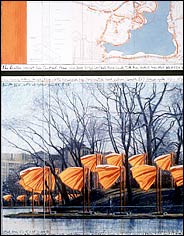 A collage depicting part of Christo's plan to bring saffron to Central Park next February, the culmination of a quarter century of effort. You might think that after more than 40 years of grand-scale achievements, like hanging a curtain between two peaks in a Colorado valley; running miles of fence through two California counties; outfitting several islands off Florida with tutus; wrapping the Pont Neuf in Paris; and swaddling the Reichstag in Berlin, the indefatigable team of Christo and his wife-collaborator, Jeanne-Claude, would at last run out of ambition. But no. With their eyes ever on the Big Apple, the two had long plotted a Christofest in Central Park. And after two and a half decades of refining the work and banging on official doors for a hearing, they are about — thanks to Mayor Michael R. Bloomberg's approval — to achieve their goal, with a project called "The Gates." It is logistically one of the team's most complicated to date, and certainly, at 25 years, the longest in gestation. Weather permitting, Saturday, Feb. 12, 2005, will see the formal opening in Central Park of the team's 16-day installation of 7,500 saffron-colored fabric panels, each suspended within a free-standing framework 16 feet high and swinging at the whim of the wind. Placed at 12-foot intervals and well over a stroller's head, the panels will occupy 23 miles of park walkways. The installation is meant not only to salute the park's half-planned, half-natural topography, but to evoke the grid structure of the surrounding city blocks. The saffron color recalls the park in fall foliage, a particularly expressive device when set against a mélange of February-bare trees. A preview of what's to come has been mounted by the Metropolitan Museum: "Christo and Jeanne-Claude: The Gates, Central Park, New York," a show of 51 preparatory drawings and collages by Christo, 64 photographs, 11 maps and tech-y diagrams, along with actual samples of the steel posts, fittings, footings and such that will support the banners along the walkways without making holes in them. (The title, "The Gates," is taken from the name used by the park's architects, Frederick Law Olmsted and Calvert Vaux, for the openings in the stone wall surrounding it.) Christo's feat is hailed as "a tribute to the grandeur of Central Park and New York City" by Philippe de Montebello, director of the Met (which will itself be in direct line of the enfilade). But the installation is also a testimony to the team's inexhaustible skill and patience in the manipulation of officialdom, the imposition of an artist's will on a very public domain. Does Central Park really need Christo's embellishment? With Christo and Jeanne-Claude, the conceptual process — the technical problems, the political arm-twisting, the fund-raising, the public relations-maneuvering and the documentation relating to their projects and, of course, the power play involved in achieving them — is as much a part of their art as the visible, sometimes beautiful but always temporary, end product. Like everything else the team does, the chronological documentation of the forthcoming event on view at the Met is as yawningly thoroughgoing as, say, a space exploration log, sparing the viewer no detail. Christo's drawings and collages show the installation from every vantage point, close-up to panoramic. Some are small and humdrum, others elaborate and impressive, like an eight-foot-long collage dated 2003, depicting the banners close up and receding on their long march, with buildings in the background. This work is topped by an aerial photograph of Central Park and a sketch of some technical details with an actual snippet of fabric. The photographs, mostly by Wolfgang Volz, exclusive photographer for Christo's projects since 1972, range from the first meeting between Christo and Jeanne-Claude and their lawyer, Theodore W. Kheel, with Gordon J. Davis, then the New York City parks commissioner, in April 1980 (a poignant note here is the visible advance in age of the participants as the years roll by), to a meeting of Community Board 8 in March 2003, at which the artist's contract with the city is explained by Jack T. Linn, an assistant commissioner of parks and recreation. Slightly less repetitive are color shots of the various manufacturing processes: the making of steel plates (5,290 tons of them) for the base weights at the ISG steel mill in Coatesville, Pa.; the weaving of more than 119,556 miles of saffron-colored nylon thread into 1,006,620 square feet of recyclable nylon fabric at the J. Schilgen Company in Emsdetten, Germany; the manufacture of the vinyl poles that hold the panels at the North American Profiles Group plant in Holmes, N.Y. (No one can say the Christo team doesn't do its bit toward fuller employment.) And then there are samples of the tangible results of all this busyness: solid steel bases each weighing between 614 and 815 pounds; steel leveling plates to ensure the verticality of the poles; the vinyl poles themselves; the fabric panels (each rolled around a cardboard tube three inches in diameter in preparation for unfurling); bolts and self-locking nuts that will total 165,704. Whew! These dumbfounding statistics make it clear why the cost of this enterprise is estimated to approach $20 million (including a $3 million donation by Christo to the Central Park Conservancy). The artist has always said he supports his enterprises through the sale of drawings and models, with no government funds involved. And as for the materials themselves, Christo says they are all subject to recycling. But what about the end product of all this? In all fairness, that can't be weighed until the actual installation is in place. Supposedly that installation will result in no damage to the park. Yet there's no denying that Christo's work has in the past achieved some beautiful effects. I will always remember the magical sight in 1972 of the orange Valley Curtain suspended between two hills against a background of grayish peaks in Rifle, Colo., lasting for nearly a day before the wind destroyed it. Nor will I forget the stunning view, from a helicopter, of the bright pink skirts inflecting the tiny green bits of land they billowed out from in the "Surrounded Islands" project of 1983 in Miami's Biscayne Bay. Neither of these, nor any of Christo's other projects, as far as I know, was destined to be permanent. The successful struggle to realize them, and then to document their existence, seemed to satisfy the artist. Paradoxically, it's the ephemerality of his ambitious projects that give them their true strength. Operating on a grand scale, boldly moving in on nature or man-made architectural schemes, he has the chutzpah to work his way with them, then walk away, leaving echoes in living minds and documents for the archives. It's not a bad way of imposing art on us; after all, look at the ugly public statues that now pepper the park. Unlike Christo's work, they aren't temporary. "Christo and Jeanne-Claude: The Gates, Central Park, New York" is on view at the Metropolitan Museum of Art, Fifth Avenue at 82nd Street, (212) 535-7710, through July 25. Copyright 2004 The New York Times Company |
|||||||||||||||||||||||||||||||||||||||||||||||||||||||||||||||||||||||||||||||||||||||||||||||||||||||||||||||||||||||||||||||||||||||||||||||||||||||||||||||||||||||||||||||||||||||||||||||||||||||||||||||||||||||||||||||||||||||||||||||||||||||||||||||||||||||||||||||||||||||||||||||||||||||||||||||||||||||||||||||||||||||||||||||||||||||||||||||||||||||||||||||||||||||||||||||||||||||||||||||||||||||||||||||||||||||||||||||||||||||||||||||||||||||||||||||||||||||||||||||||||||||||||||||||||||||||||||||||||||||||||||||||||||||||||||||||||||||||||||||||||||||||||||||||||||||||||||||||||||||||||||||||||||||||||||||||||||||||||||||||||||||||||||||||||||||||||||||||||||||||||||||||||||||||||||||||||||||||||||||||||||||||||||||||||||||||||||||||||||||||||||||||||||||||||||||||||||||||||||||||||||||||||||||||||||||||||||||||||||||||||||||||||||||||||||||||||||||||||||||||||||||||||||||||||||||||||||||||||||||||||||||||||||||||||||||||||||||||||||||||||||||||||||||||||||||||||||||||||||||
|
links |
http://www.christojeanneclaude.net/liveGates.html | ||||||||||||||||||||||||||||||||||||||||||||||||||||||||||||||||||||||||||||||||||||||||||||||||||||||||||||||||||||||||||||||||||||||||||||||||||||||||||||||||||||||||||||||||||||||||||||||||||||||||||||||||||||||||||||||||||||||||||||||||||||||||||||||||||||||||||||||||||||||||||||||||||||||||||||||||||||||||||||||||||||||||||||||||||||||||||||||||||||||||||||||||||||||||||||||||||||||||||||||||||||||||||||||||||||||||||||||||||||||||||||||||||||||||||||||||||||||||||||||||||||||||||||||||||||||||||||||||||||||||||||||||||||||||||||||||||||||||||||||||||||||||||||||||||||||||||||||||||||||||||||||||||||||||||||||||||||||||||||||||||||||||||||||||||||||||||||||||||||||||||||||||||||||||||||||||||||||||||||||||||||||||||||||||||||||||||||||||||||||||||||||||||||||||||||||||||||||||||||||||||||||||||||||||||||||||||||||||||||||||||||||||||||||||||||||||||||||||||||||||||||||||||||||||||||||||||||||||||||||||||||||||||||||||||||||||||||||||||||||||||||||||||||||||||||||||||||||||||||||